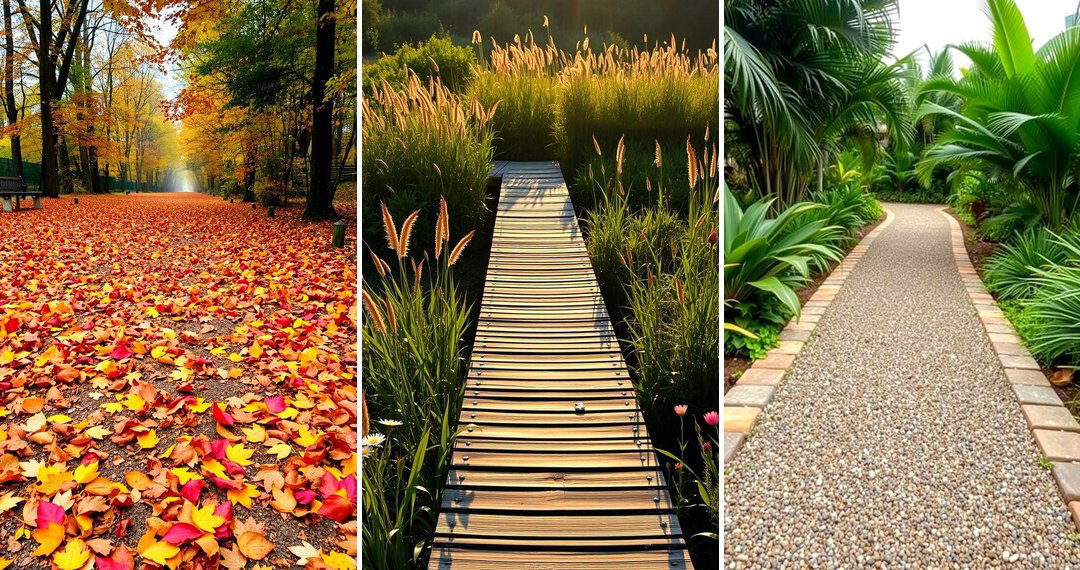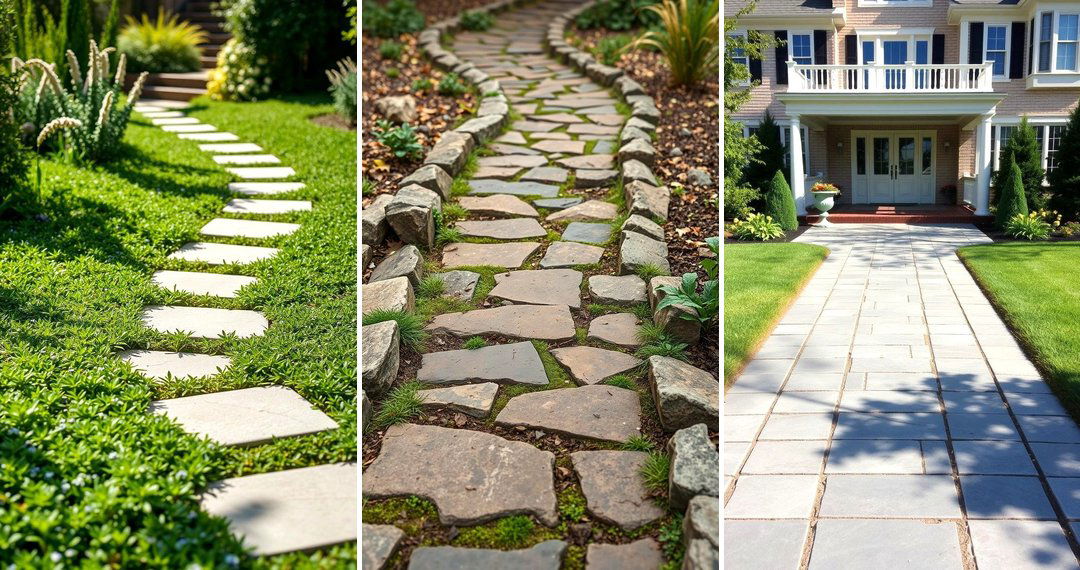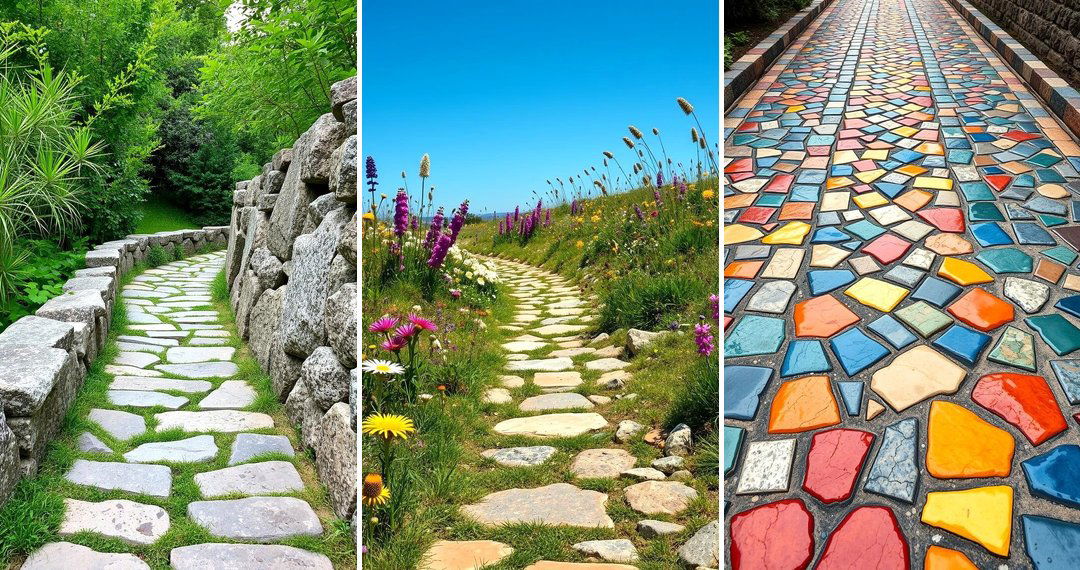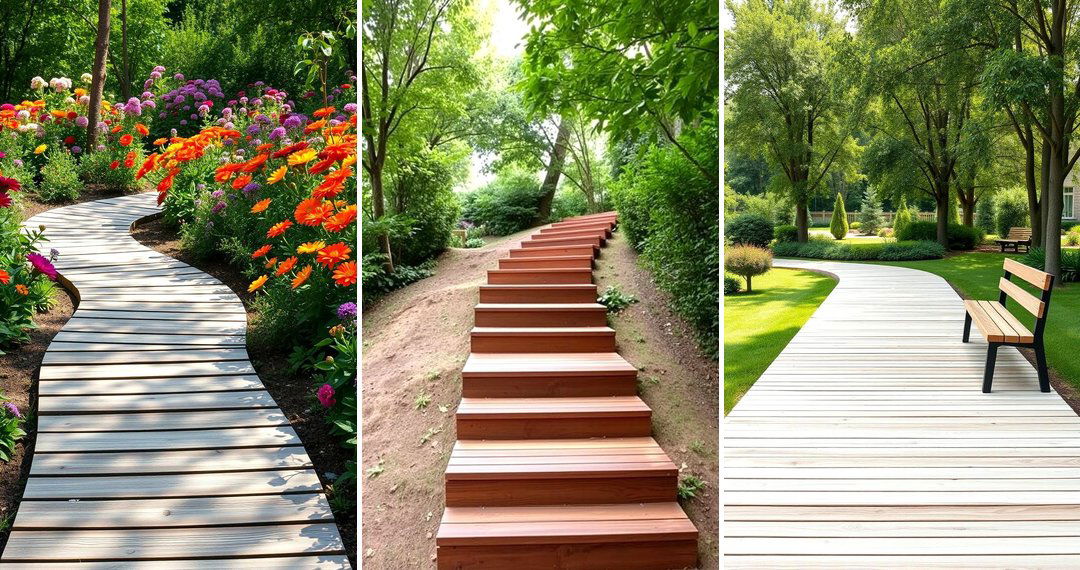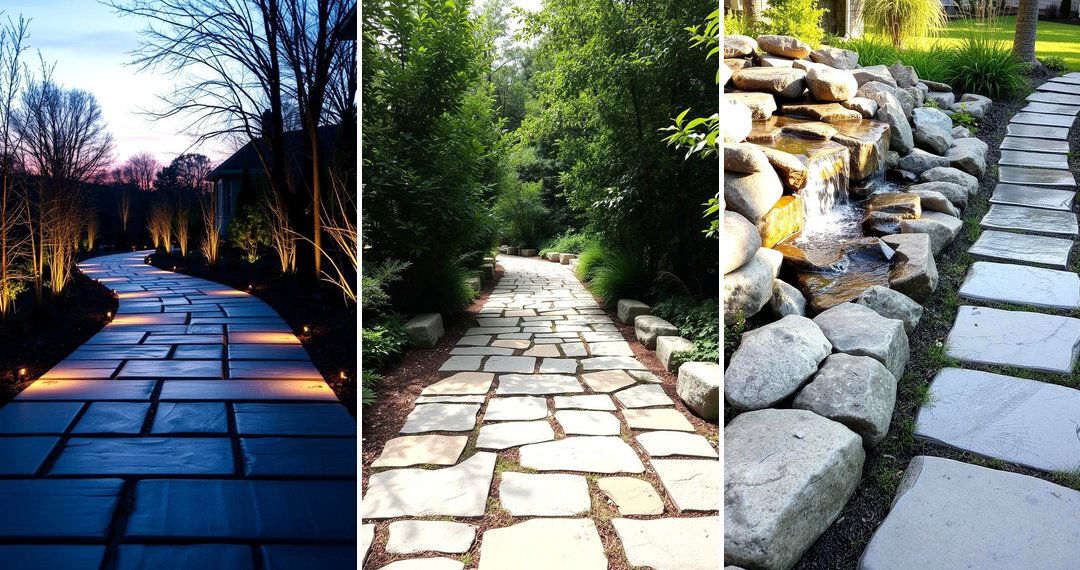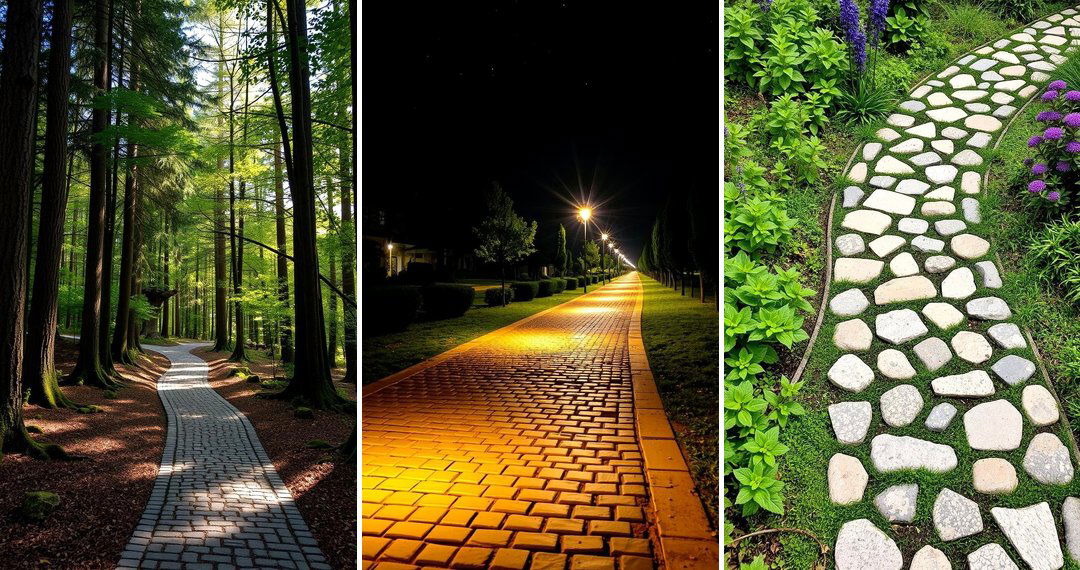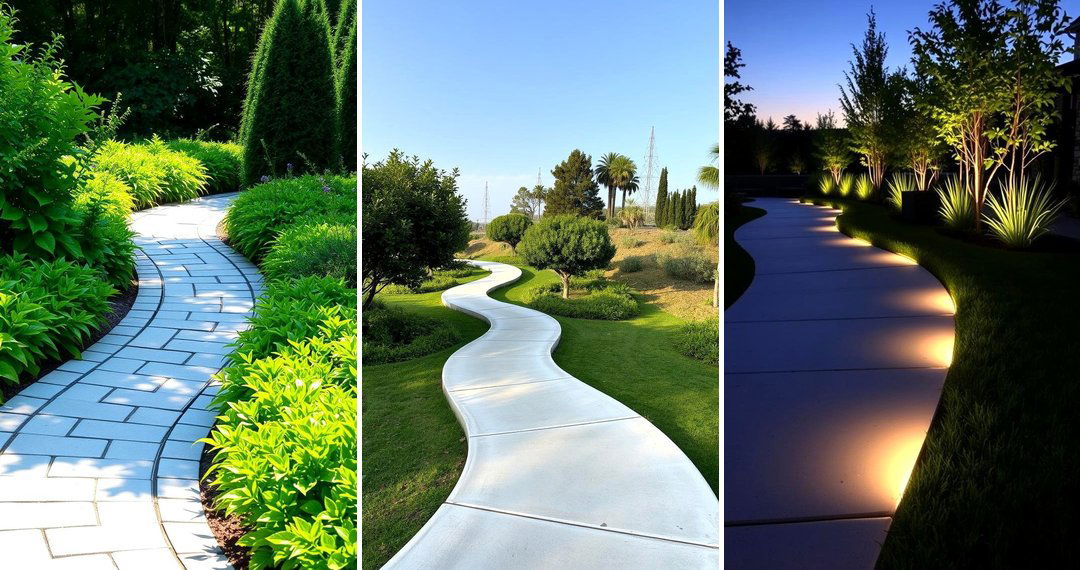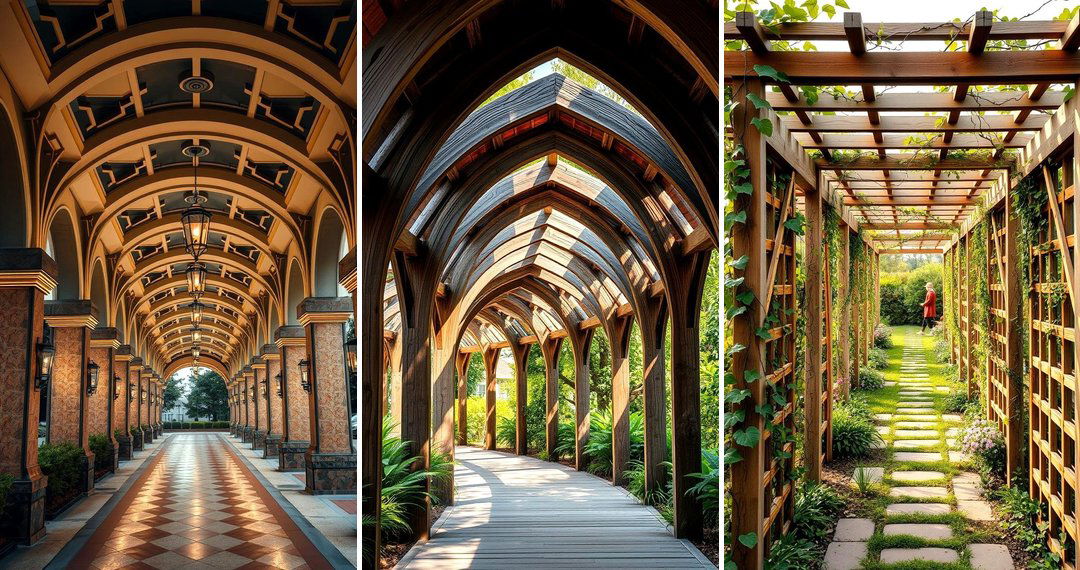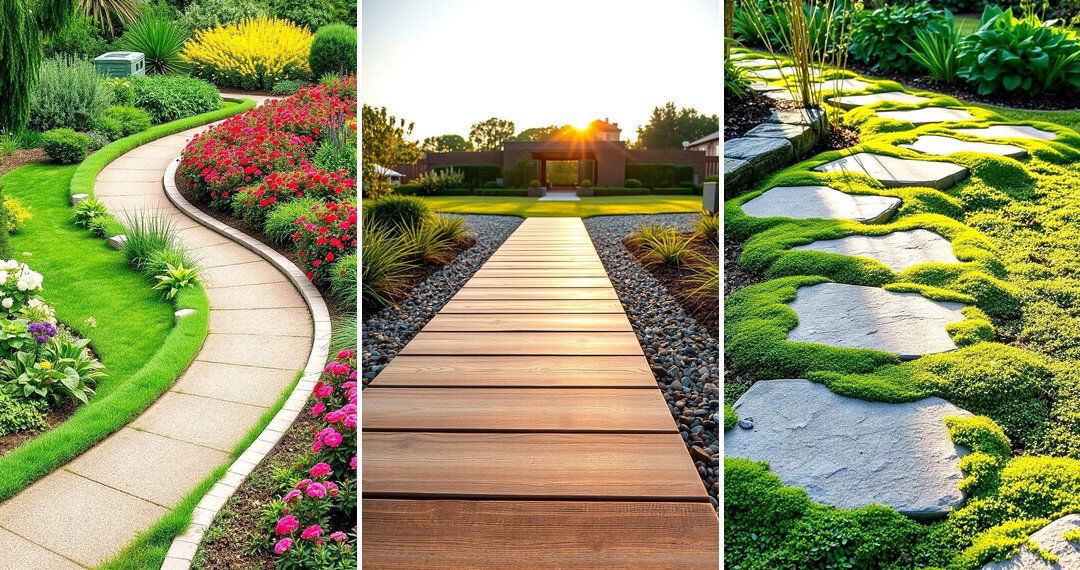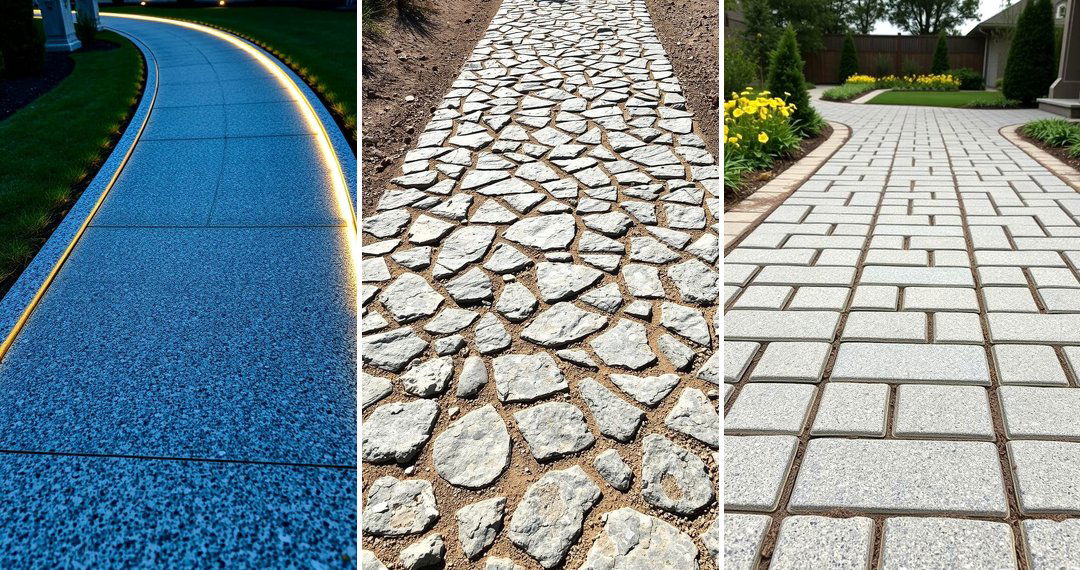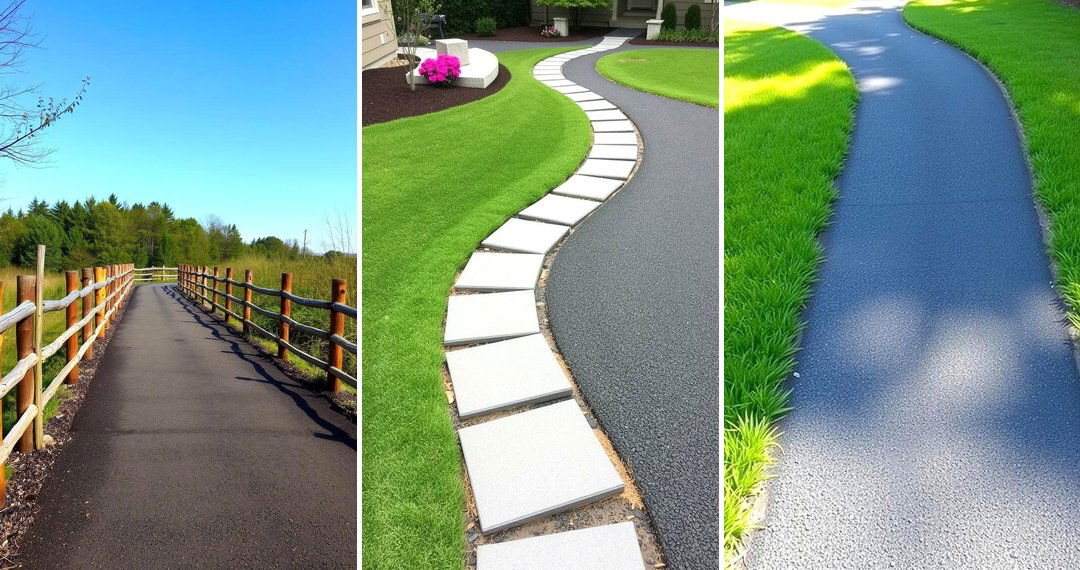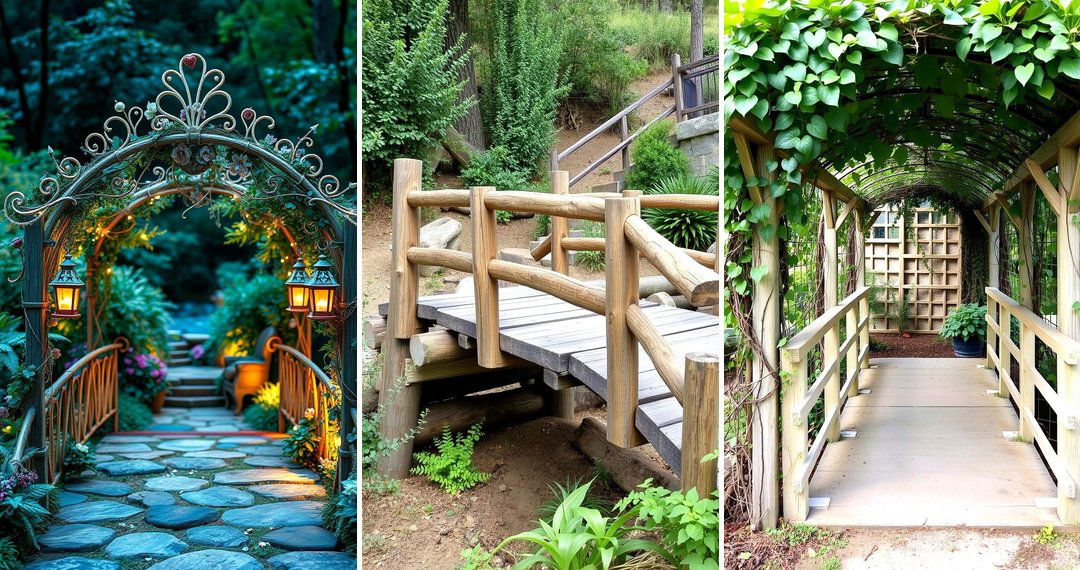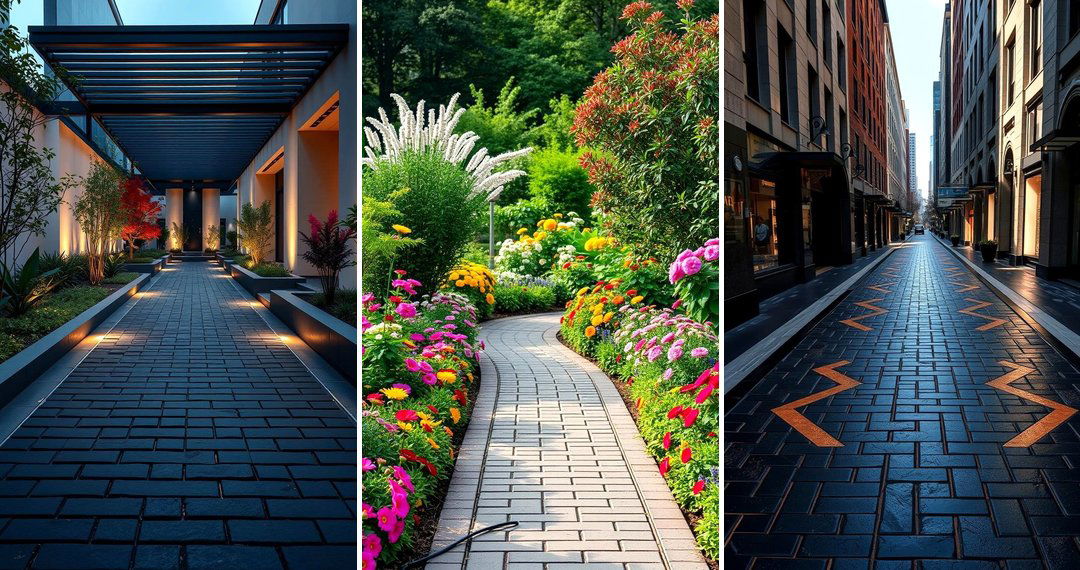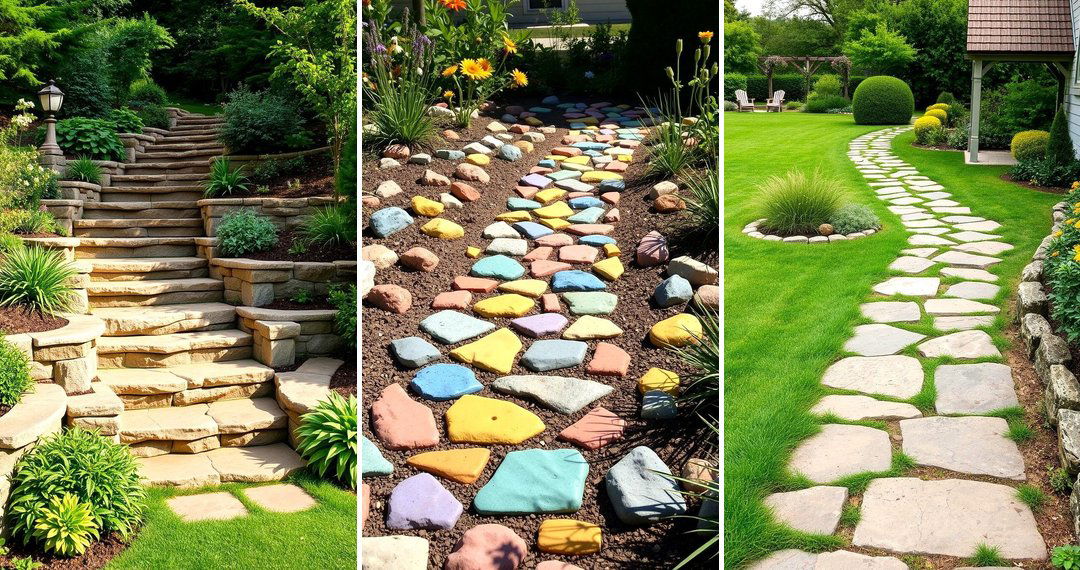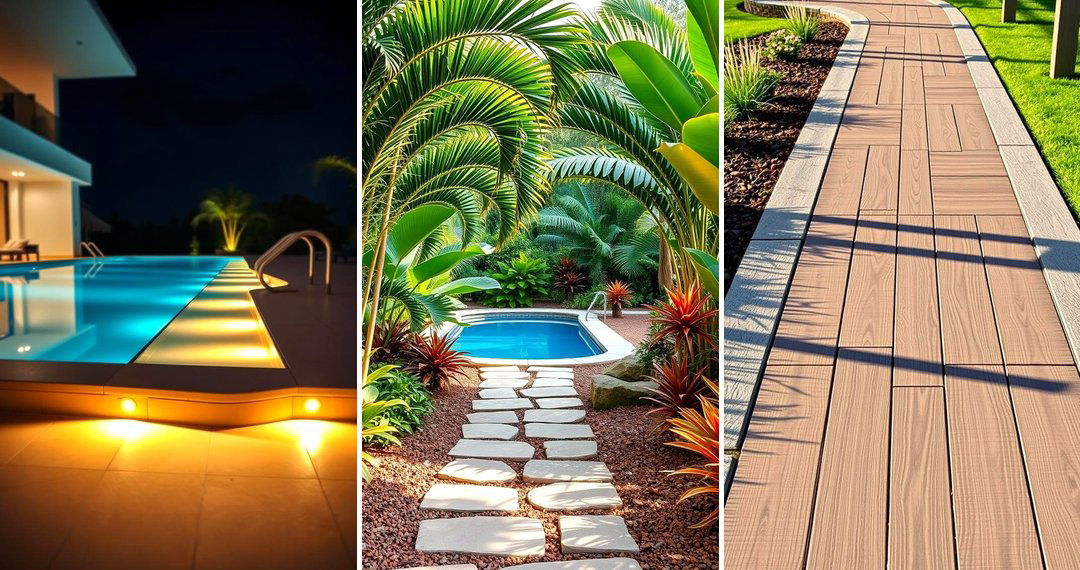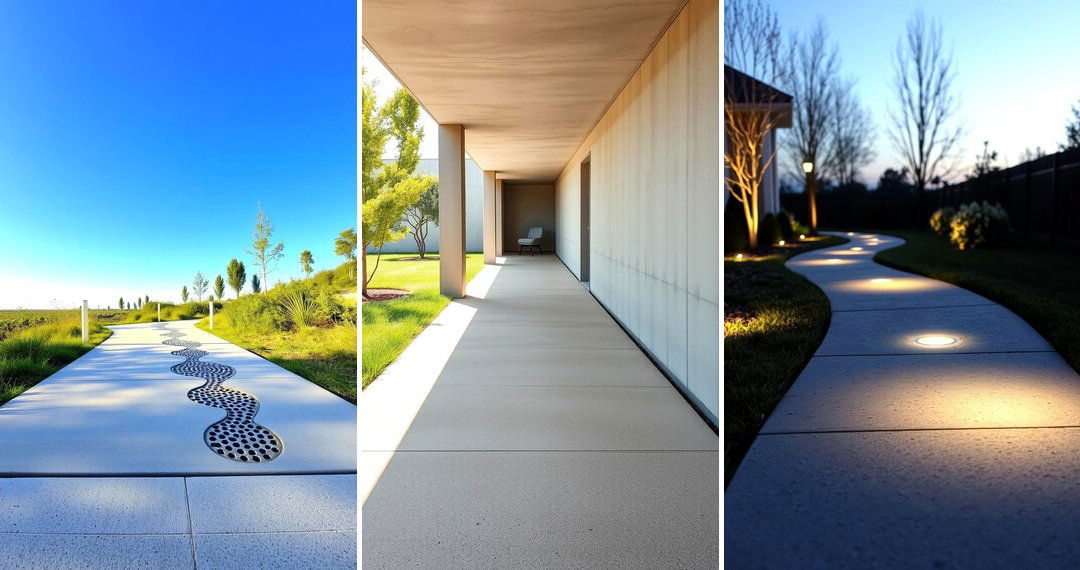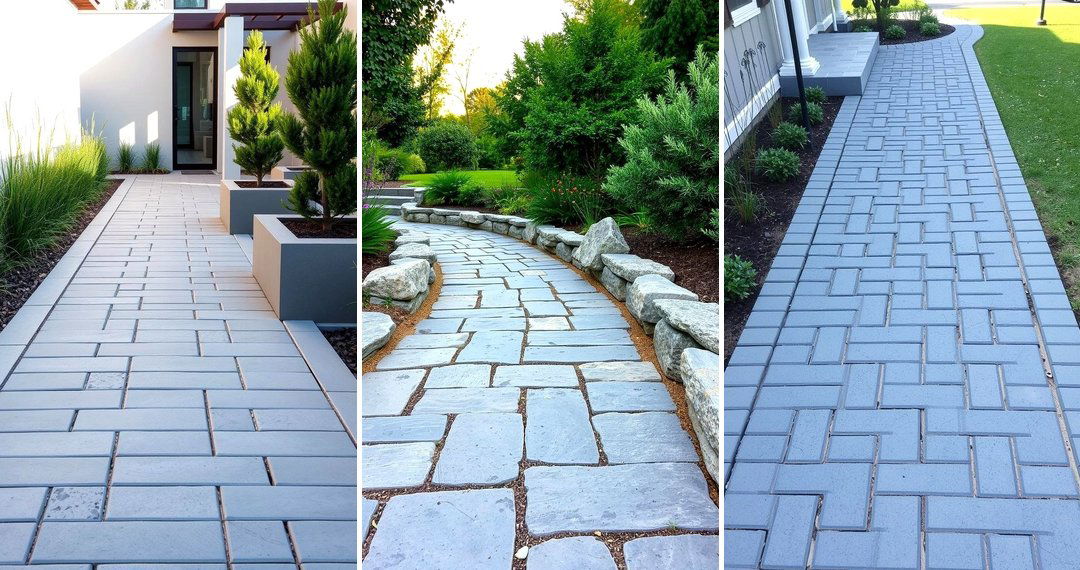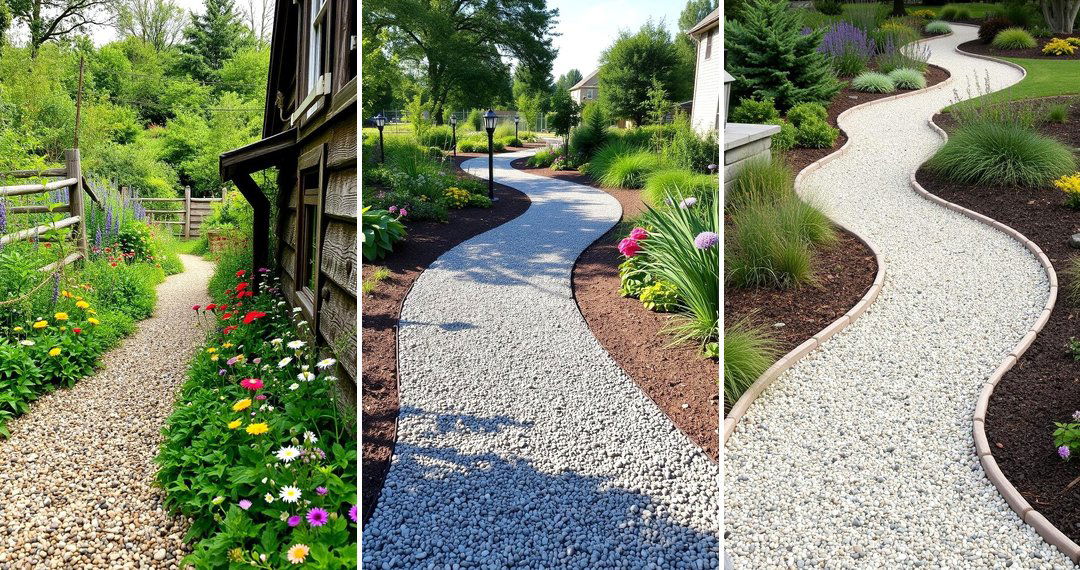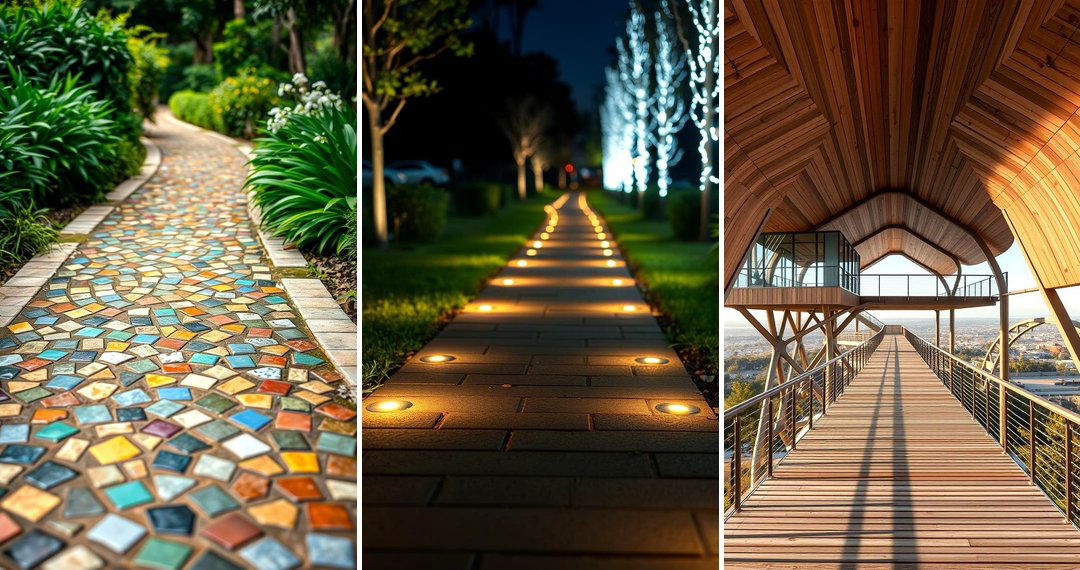Curved walkways are an elegant way to introduce flow, movement, and charm into any outdoor space. Whether you’re designing a cozy garden path or an intricate garden design, curved walkways create a sense of wonder and exploration, inviting visitors to take their time as they stroll. These walkways also have functional advantages, such as adding visual interest and enhancing the overall aesthetic. If you’re looking to upgrade your outdoor space, here are 24 unique curved walkway ideas that will help guide you toward a more inviting, beautiful environment.
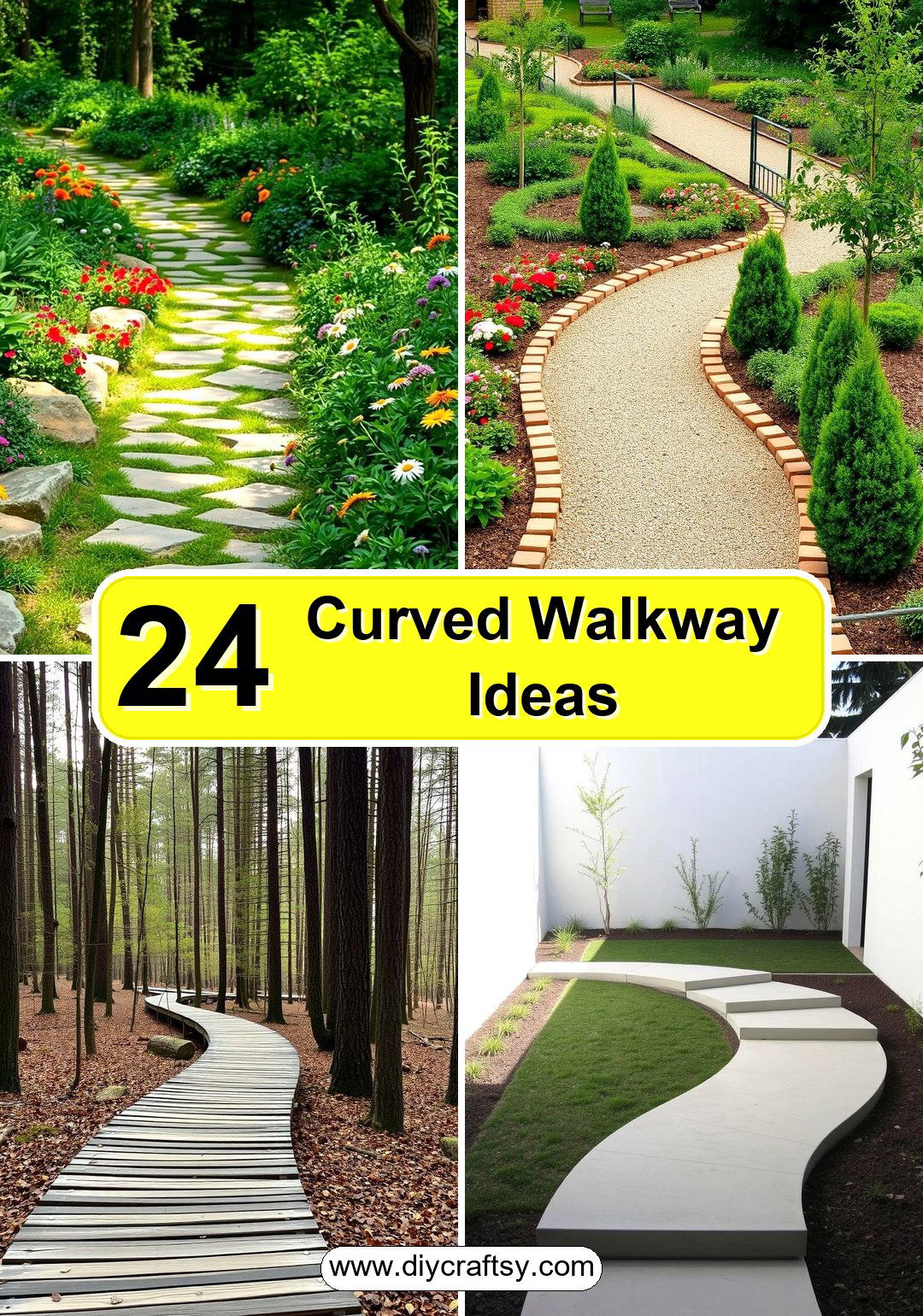
1. Meandering Stone Path
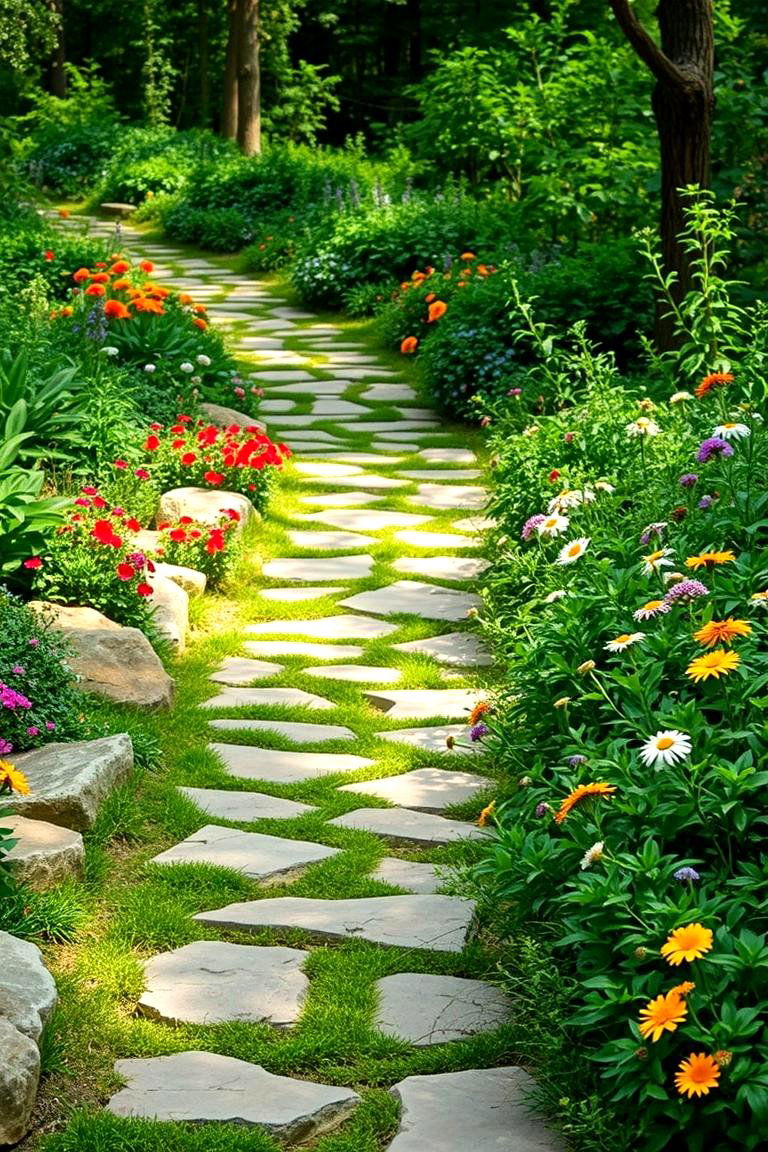
Imagine a natural stone path winding through your garden, leading visitors along a path of discovery. A meandering stone walkway creates a rustic and serene vibe, blending seamlessly into natural landscapes. The irregular shapes of the stones help give it a casual, unplanned feel, mimicking the unpredictability of nature itself. This path is not just aesthetically pleasing but also durable, providing a sturdy surface that stands the test of time. It encourages wandering and exploration, making it ideal for gardens or even wooded areas.
2. Elegant Brick Path
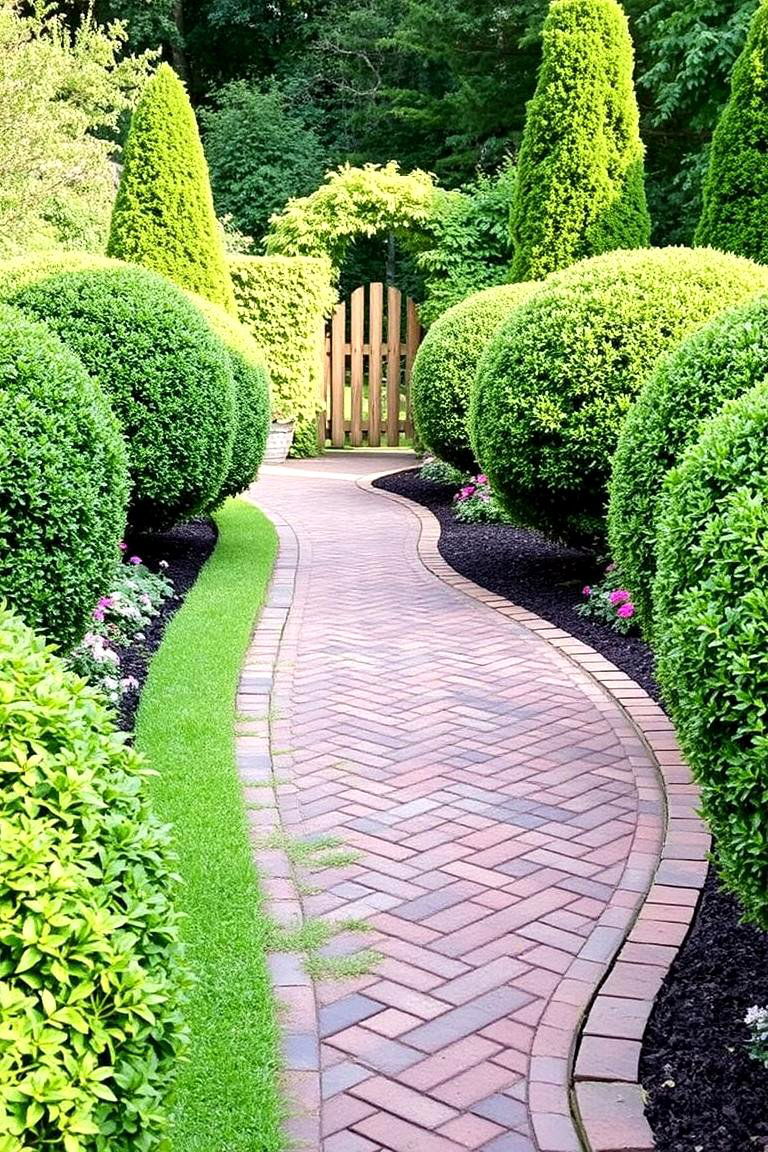
A curved brick walkway adds a sense of old-world charm to any outdoor space. The uniformity of brick, combined with its warm tones, contrasts beautifully with lush greenery, providing a sophisticated yet grounded appearance. The curvature of the path enhances the flow, directing visitors naturally from one area to the next. Bricks are durable and versatile, offering a balance between style and practicality. Over time, the bricks may even develop a lovely patina, adding to the walkway's charm.
3. Gravel Garden Path
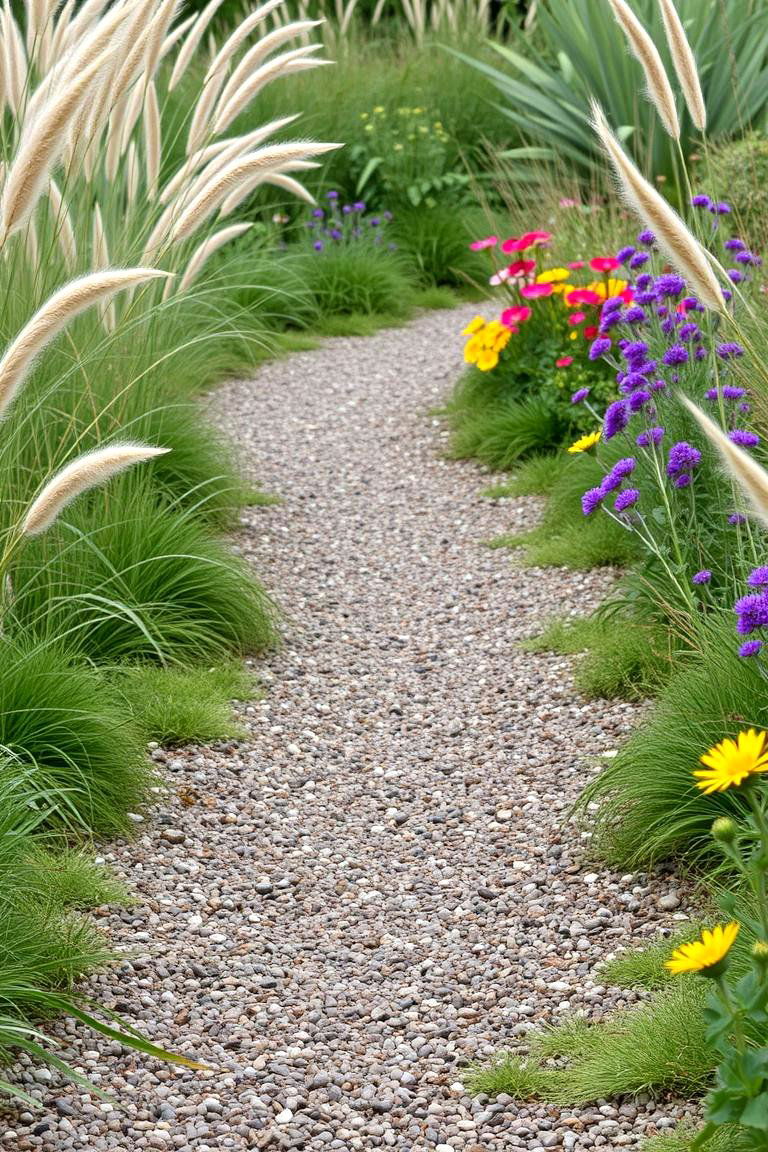
For a more casual, eco-friendly option, a gravel garden path is an excellent choice. Gravel provides excellent drainage and can be easily shaped to fit any garden design. This type of walkway is perfect for creating a relaxed vibe and works well with various landscaping styles, from cottage gardens to modern spaces. The crunching sound of gravel beneath your feet adds to the sensory experience, making a walk along this path even more engaging. Plus, gravel is relatively easy to install and maintain.
4. Wooden Plank Walkway
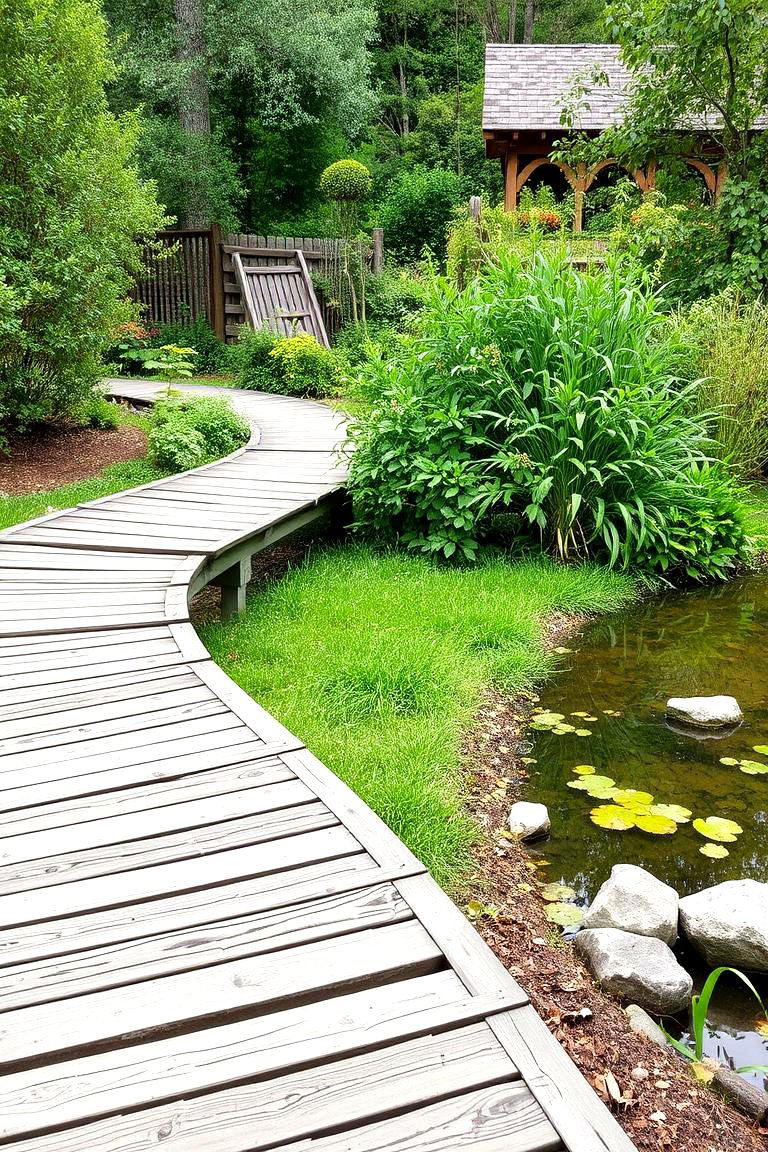
A wooden plank walkway combines natural materials with clean lines for a rustic yet contemporary design. The planks can be arranged to form a gently curved path that follows the contours of your landscape. Wood brings warmth and texture to the outdoor setting, making it a cozy and inviting option. Over time, the wood may weather, taking on a silver-gray hue that blends beautifully with its surroundings. This path works especially well in garden areas with a variety of plants or near water features.
5. Flagstone Pathway
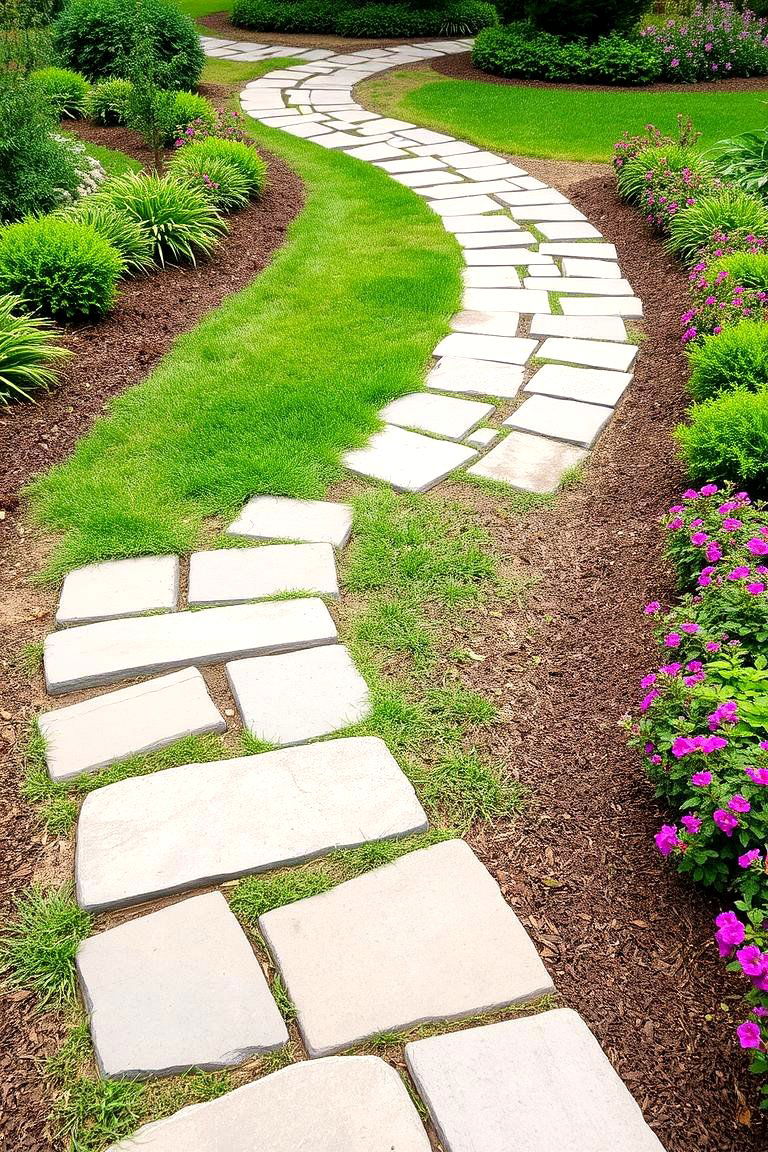
A flagstone walkway offers both durability and natural beauty. The large, flat stones are ideal for creating a winding, curved path that suits gardens or patios. Flagstone can be laid in a variety of patterns, allowing for customization to fit your space. The varying colors and textures of the stones enhance the overall aesthetic of your landscape, providing a pathway that feels both sturdy and organic. Flagstone is also easy to maintain and resists wear, making it an ideal long-term solution.
6. Cobblestone Walkway
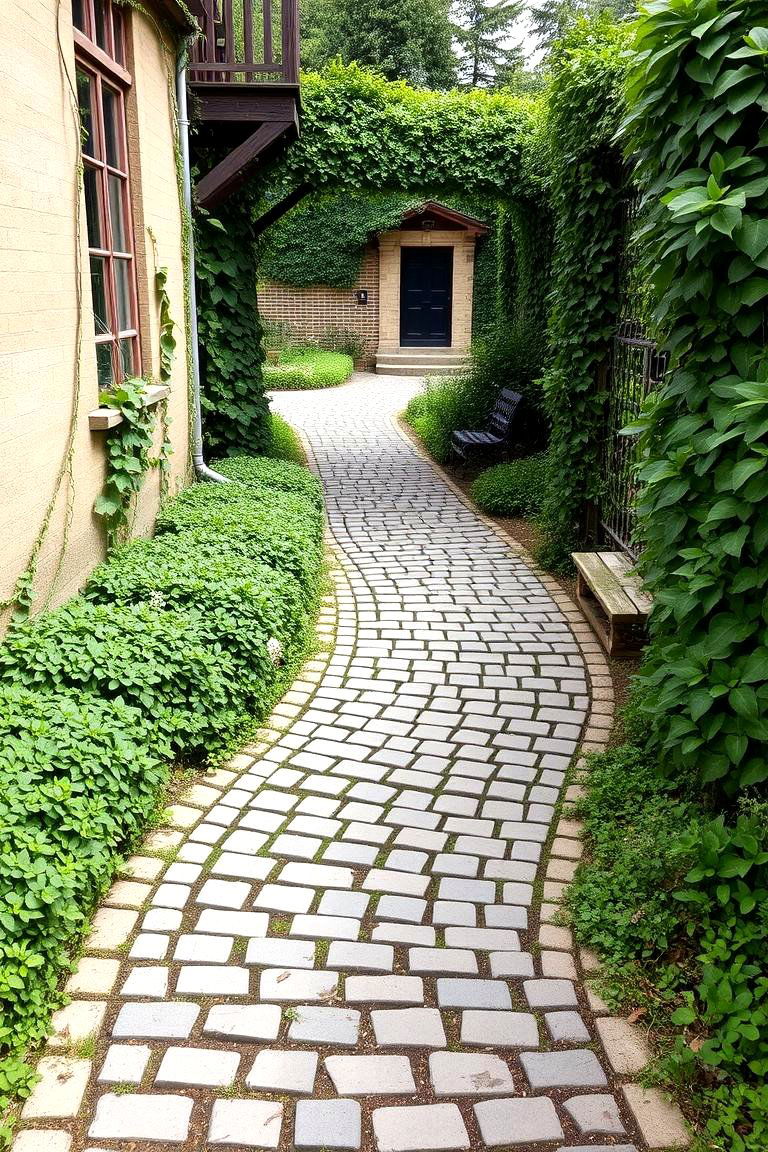
Cobblestones are timeless and add a classic feel to any landscape. A curved cobblestone walkway can evoke an Old European charm, particularly when paired with traditional garden styles. The varied sizes and irregular shapes of the stones create a dynamic, textured surface that’s pleasing to the eye. This type of walkway is incredibly durable and can last for years with minimal maintenance, offering both beauty and functionality. Its antique-like look grows more charming as it ages, making it a unique choice.
7. Gravel and Brick Combination
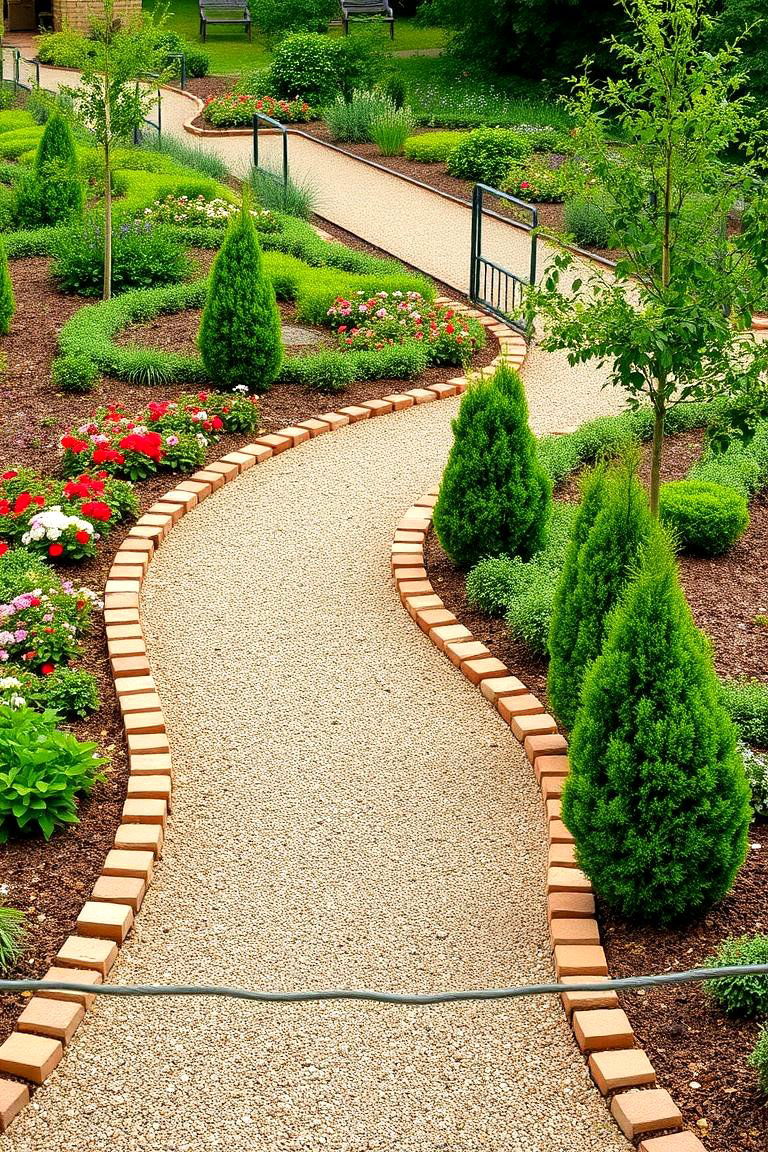
If you're looking to combine both modern and rustic elements, consider a gravel and brick combination walkway. A curved brick border can frame a path of loose gravel, offering a structured yet soft look. The brick provides a neat, defined boundary, while the gravel fills in the middle, offering flexibility and texture. This combination is ideal for creating contrast and balancing formality with the relaxed ambiance of gravel. It’s perfect for pathways that lead through gardens or backyard landscapes.
8. Stepping Stone Pathway
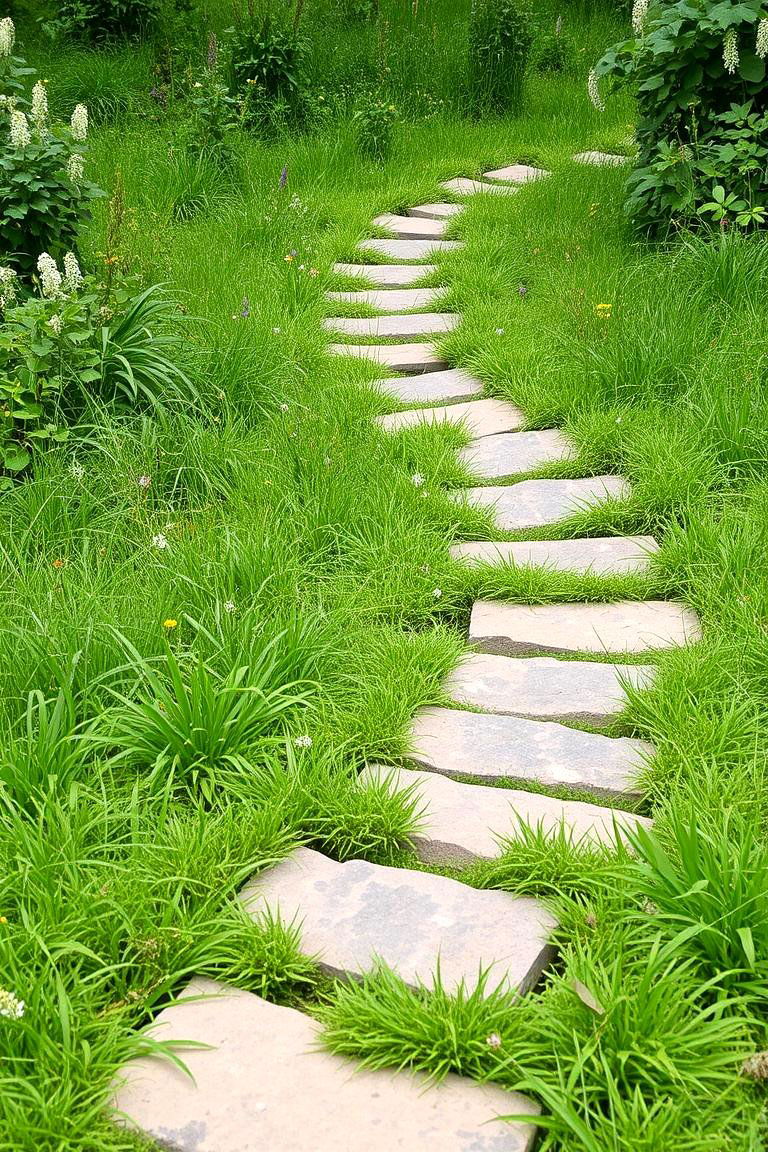
Stepping stones create an informal, playful walkway that invites adventure and exploration. A curved path of stepping stones is great for a garden or natural area, as it leads visitors from one spot to another in a fun, whimsical manner. You can choose from a variety of stone types, shapes, and sizes, allowing for a lot of creativity in the design. Whether you use large flat stones or smaller, irregular ones, this type of path is easy to install and offers a simple yet striking look.
9. Contemporary Concrete Path
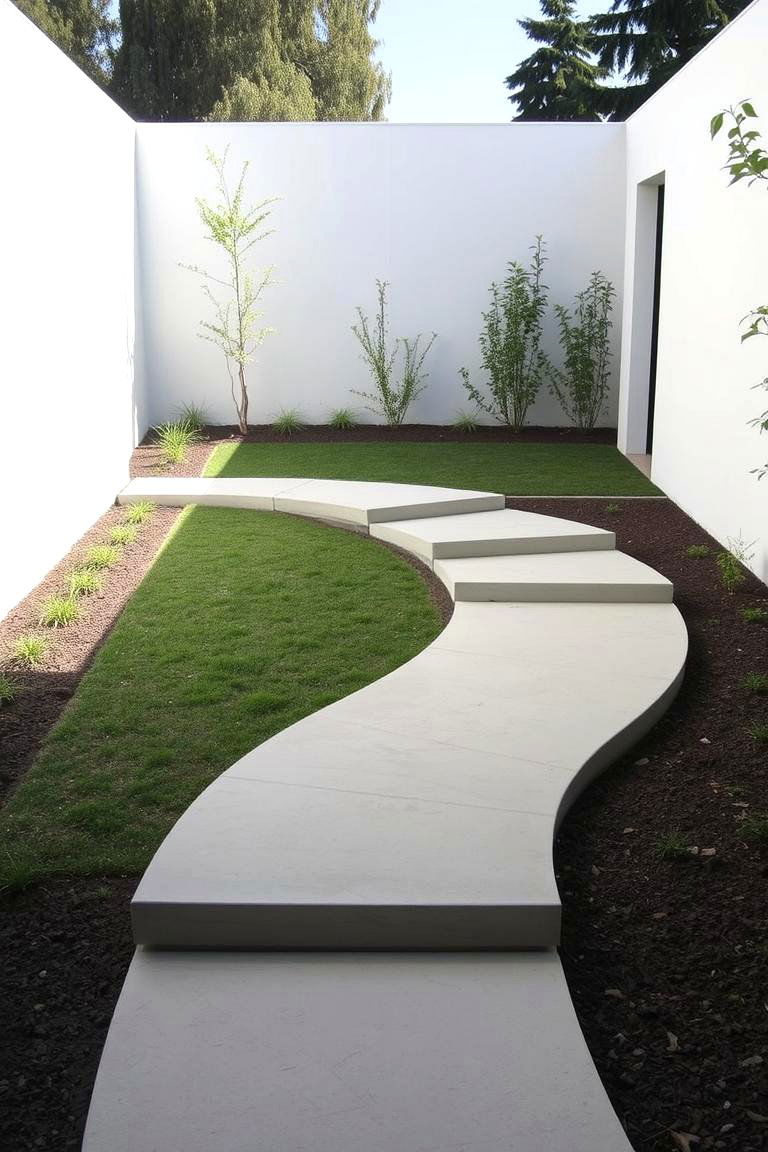
A contemporary concrete walkway with a curved design offers a sleek, minimalist appeal. Concrete can be shaped and poured to fit almost any design, making it an ideal option for modern outdoor spaces. The smooth, clean surface of concrete can be polished or textured to suit your style, while the curved shape leads visitors through the space in a fluid, graceful manner. This type of walkway is low-maintenance, durable, and can be easily customized to match your outdoor decor.
10. Natural Pebble Path
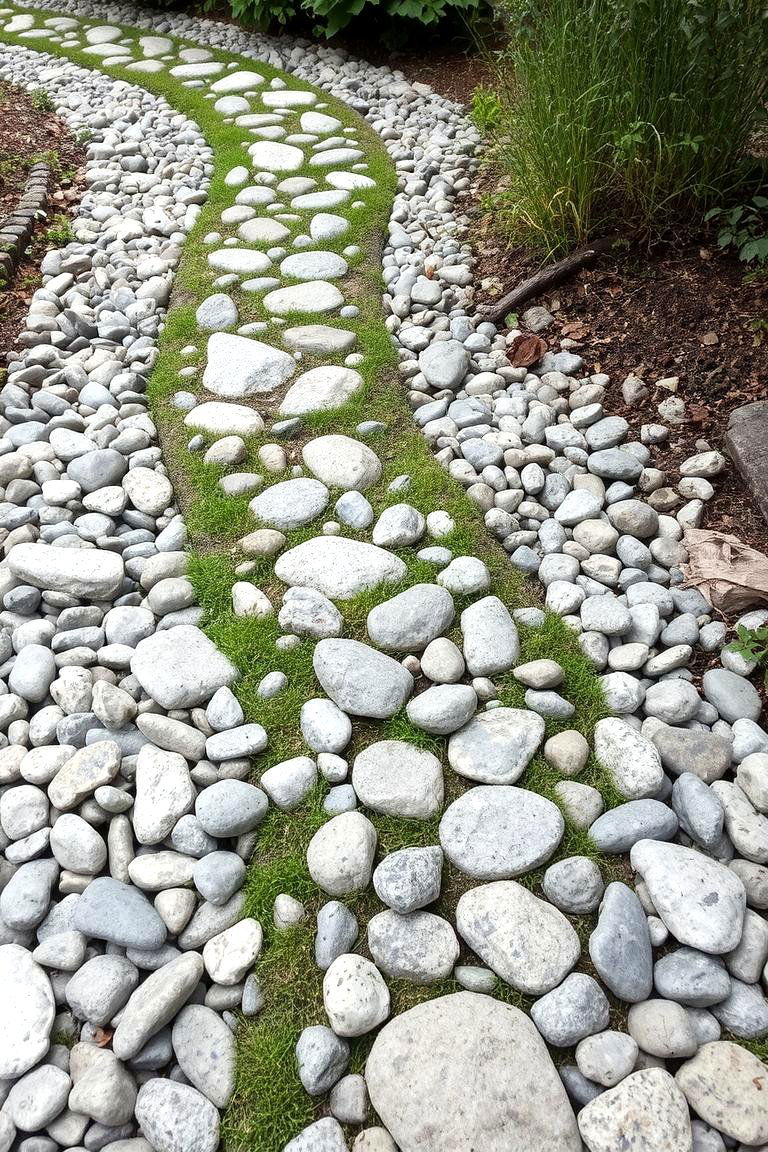
If you’re after a soft, gentle look, a natural pebble path could be just what you need. Pebbles provide an organic feel that complements various landscapes, from beachy settings to forested areas. A curved path of small, smooth pebbles invites visitors to take a leisurely stroll while adding a tactile dimension to their experience. The pebbles can be embedded into a soft sand or dirt base for a truly natural feel, making it a low-impact choice for eco-conscious gardeners.
11. Paver Walkway
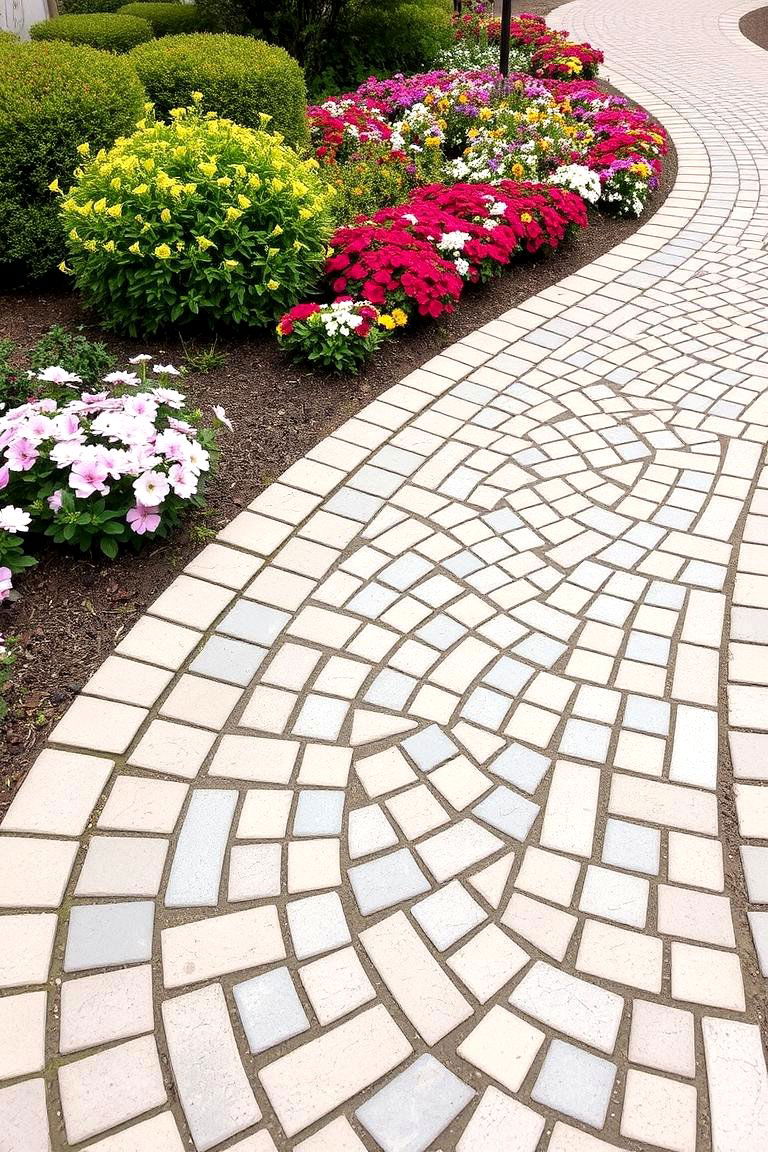
Pavers come in an array of colors, shapes, and materials, making them a versatile option for a curved walkway. You can select a uniform pattern or mix and match different textures to create a personalized design. A curved paver path provides a clean, structured look while still offering the flexibility to fit into a variety of landscape designs. The pavers are easy to maintain and replace, ensuring your walkway remains intact and looking great for years to come.
12. Mixed Material Walkway
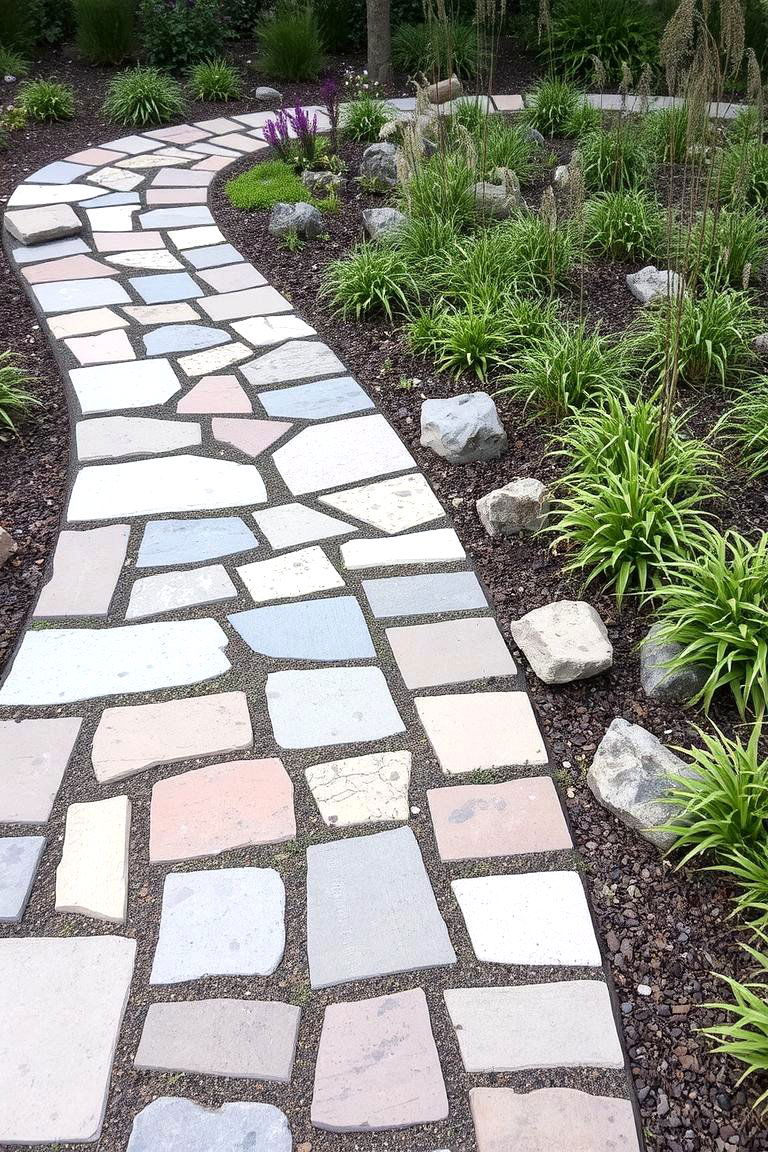
For a dynamic, eclectic look, try a mixed material walkway that combines different surfaces like brick, stone, wood, and gravel. The key to making this work is using a curving design that ties all the materials together, creating a cohesive flow. The variation in textures and colors keeps the path interesting and adds depth to the landscape. This type of walkway is perfect for those who want to express their creativity while maintaining a harmonious overall design.
13. Curved Turf Pathway
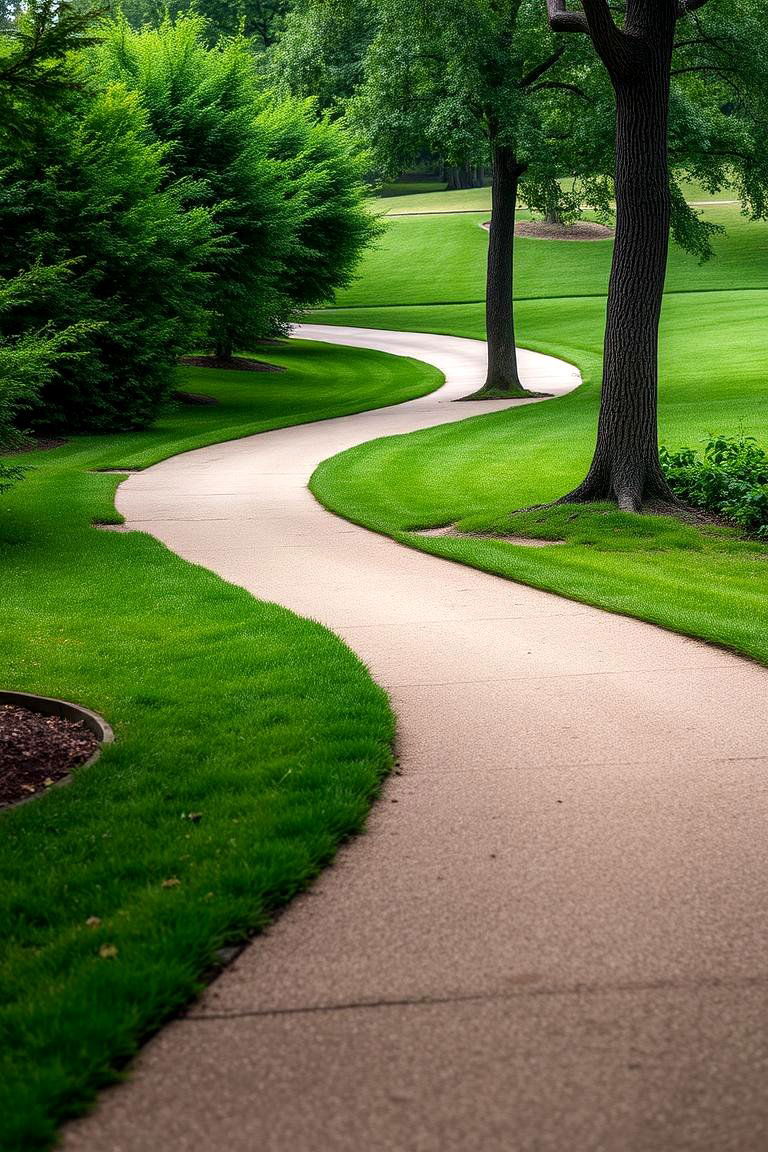
A turf walkway is perfect for those who want a more natural, grassy feel underfoot. Curved turf paths are ideal for a casual, outdoor setting where the goal is to blend seamlessly with the surrounding lawn. Turf is a soft, environmentally friendly option that creates a lush and inviting path. For those who live in temperate climates, turf paths can provide a soft and refreshing alternative to traditional hardscaping, making it a relaxing option for strolls through the garden.
14. Minimalist Gravel Path
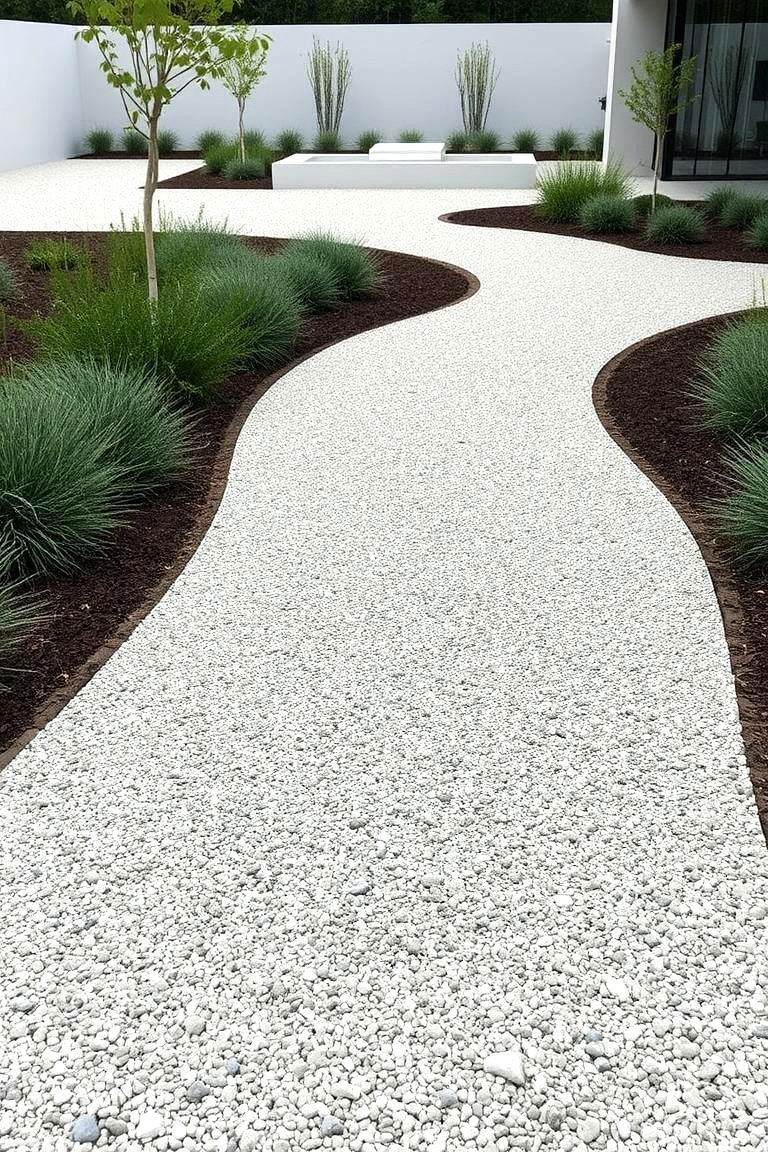
If you’re aiming for a clean, minimalist aesthetic, a simple gravel path with a gentle curve may be the perfect solution. The light texture of gravel can be combined with a restrained layout to create a modern and sophisticated look. This type of walkway blends well with minimalist landscapes, offering a subtle yet inviting pathway without overwhelming the surroundings. The gravel allows for excellent drainage, keeping your path dry and functional no matter the weather.
15. Zen Garden Path
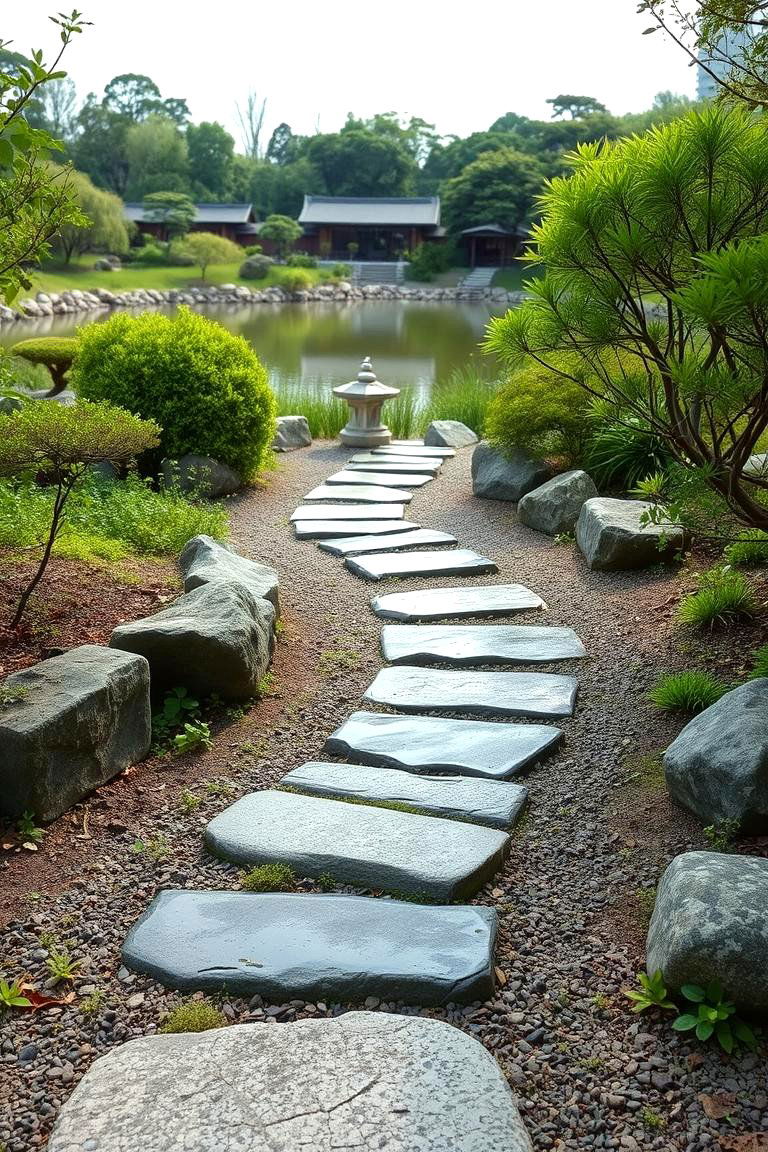
A curved path through a Zen garden can be a truly calming experience. The smooth stones or pebbles that line this path invite quiet reflection as you walk through the space. Curved lines in Zen design promote flow and harmony, contributing to a tranquil atmosphere. The Zen garden path may be simple, with just a few carefully placed stones, or more elaborate, with intricate designs. This path type is ideal for anyone looking to create a peaceful retreat in their backyard or garden.
16. Rustic Timber Boardwalk
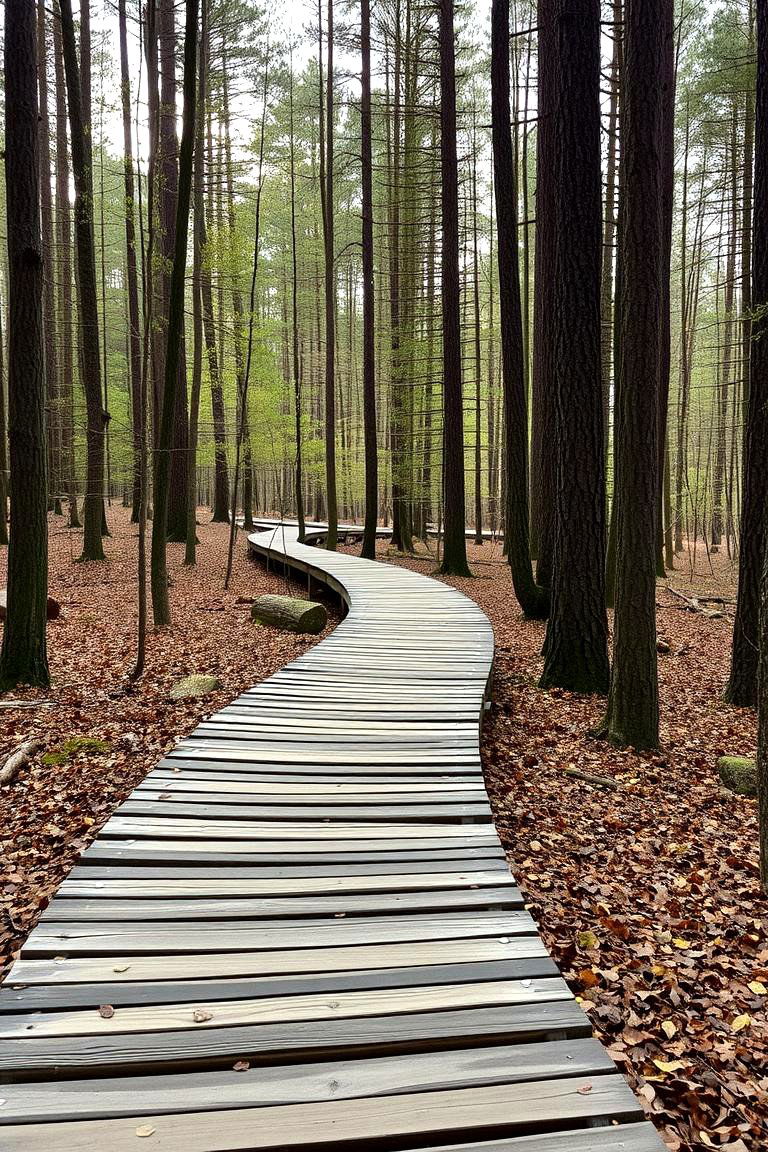
A rustic timber boardwalk provides a charming, nature-inspired way to navigate through wet or marshy areas of your garden. The curves in the boardwalk help to soften the look of the path while adding a sense of adventure. Timber offers a warm, earthy texture that blends well with surrounding plants and trees. The slats of wood provide a sturdy surface to walk on while maintaining a natural aesthetic, making it perfect for more rustic, country-style gardens.
17. Water-Edge Walkway
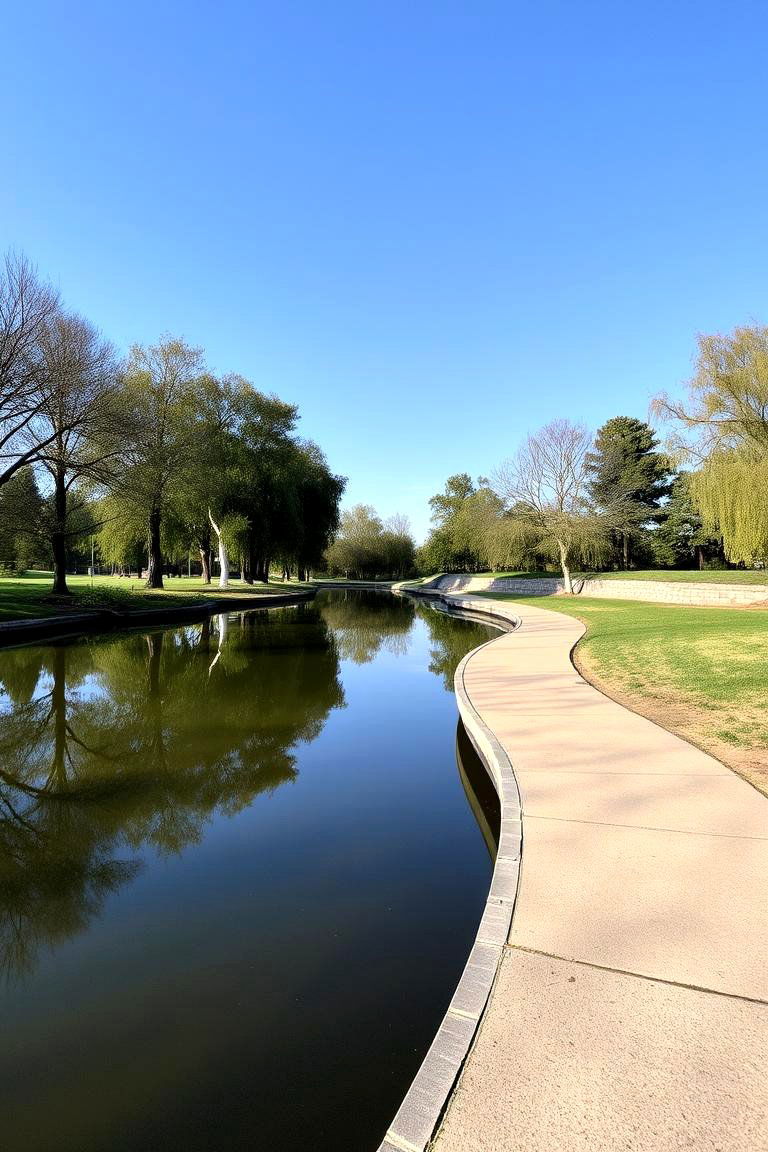
A curved walkway that follows the edge of a pond, lake, or other water features creates a peaceful atmosphere. The reflective surface of the water adds to the beauty of the walkway, while the curves help soften the look of the landscape. A water-edge path encourages contemplation and relaxation, offering a serene experience as you walk along its banks. This type of walkway can be paved or natural, depending on the look you're aiming for, and is ideal for gardens or areas with water elements.
18. Gravel and Stone Border Walkway
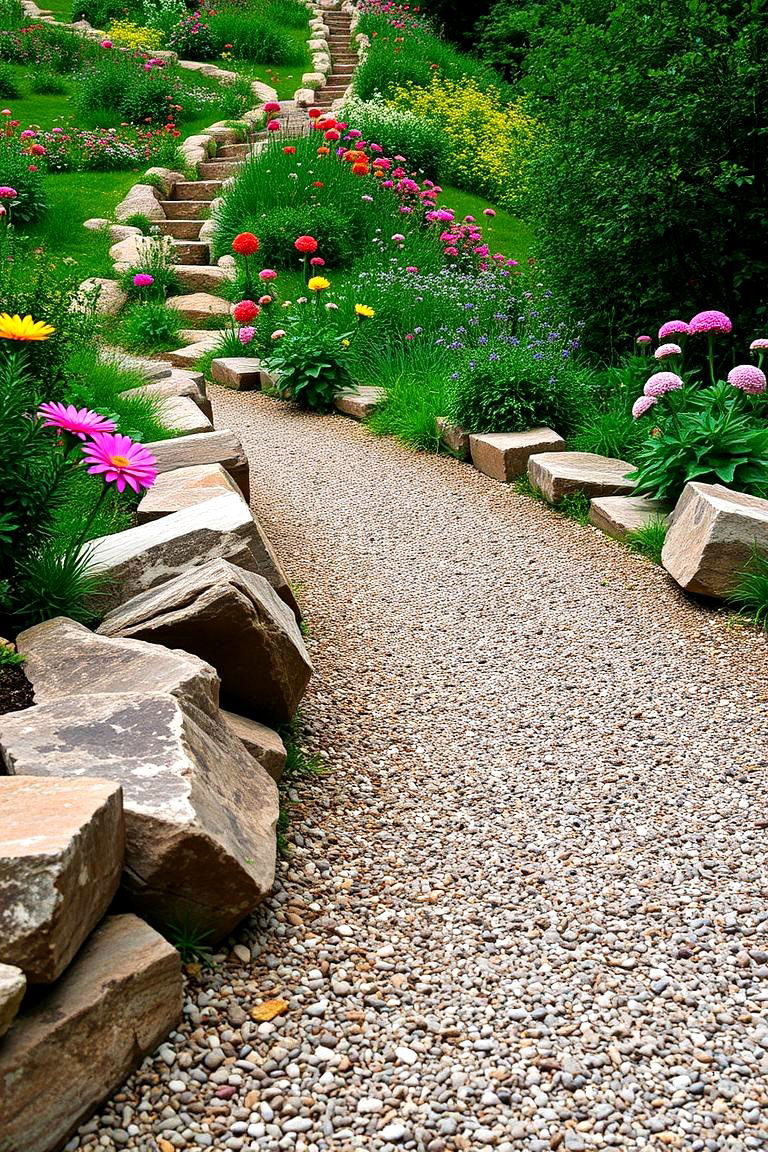
For a functional and stylish solution, a gravel path framed by larger stones creates a striking contrast. The gravel serves as the path, while the border of stones helps to keep it contained and visually interesting. The curves in the design guide the eye naturally through the space, while the combination of gravel and stone provides both texture and durability. This style is perfect for a garden path that requires a bit more structure but still maintains an organic feel.
19. Winding Brick Pathway with Lush Foliage
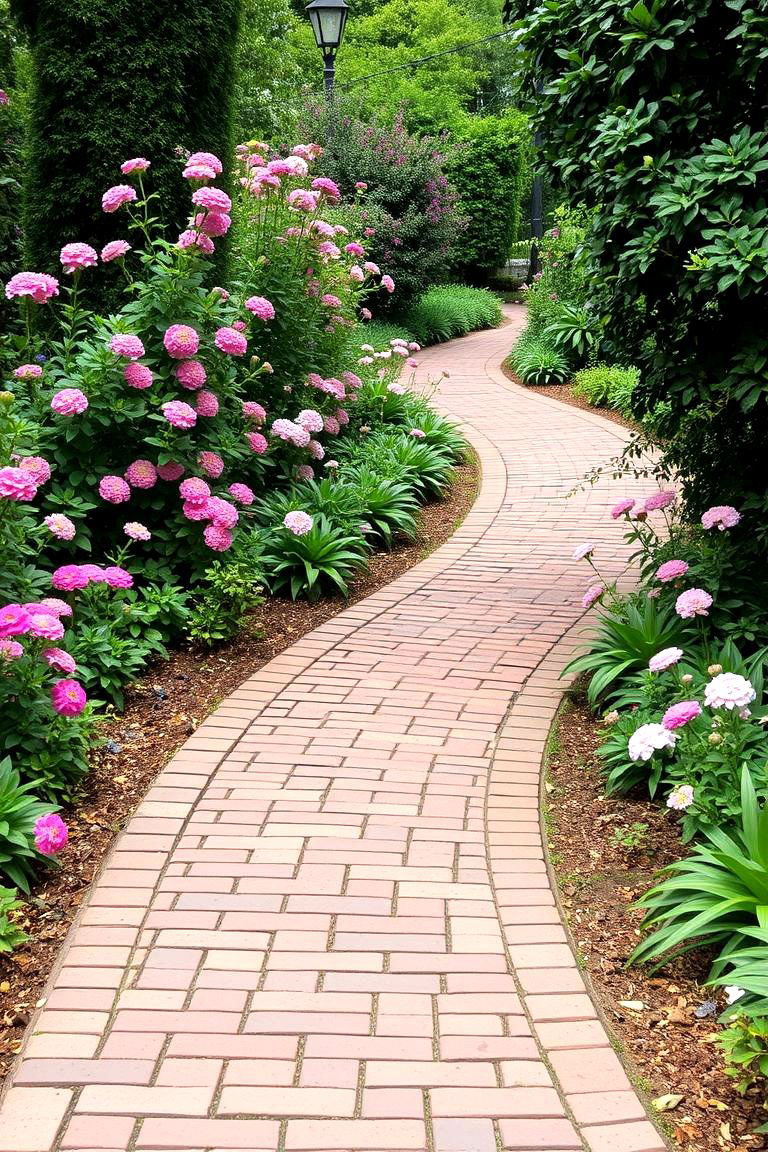
The winding design of a brick walkway, paired with lush foliage, makes for a stunning garden feature. The curves of the brick path guide visitors through an ever-changing landscape, with various plants and flowers filling the borders. The combination of the uniform bricks and the natural growth of the plants creates a harmonious balance between man-made structure and nature. This pathway works well in gardens with rich, green surroundings or areas where you want to encourage exploration.
20. Curved Flagstone Patio Path
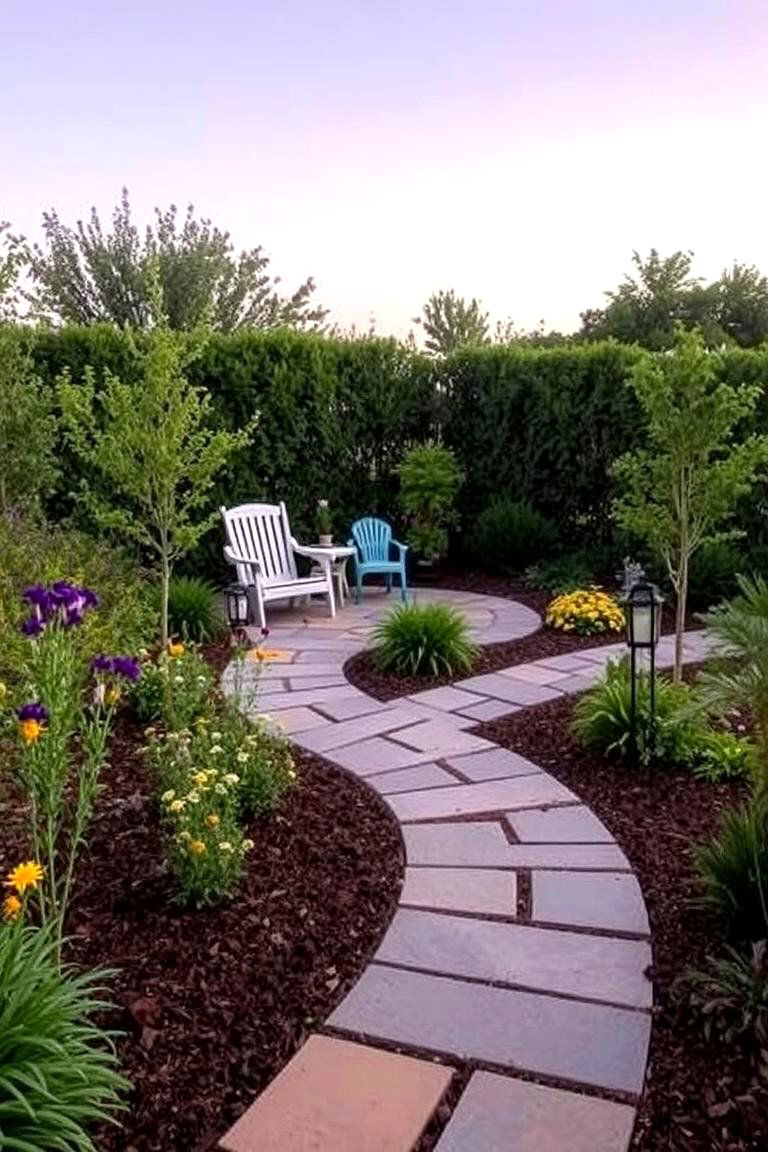
A curved flagstone pathway that leads from your patio to a garden or seating area is both functional and decorative. The path can be laid in an irregular pattern, adding a casual and natural feel to your outdoor living space. Flagstone’s earth tones blend beautifully with various landscaping styles, and the gentle curve of the path creates a sense of movement. This design invites guests to relax and explore while adding an organic touch to your patio.
21. Curved Gravel and Turf Path
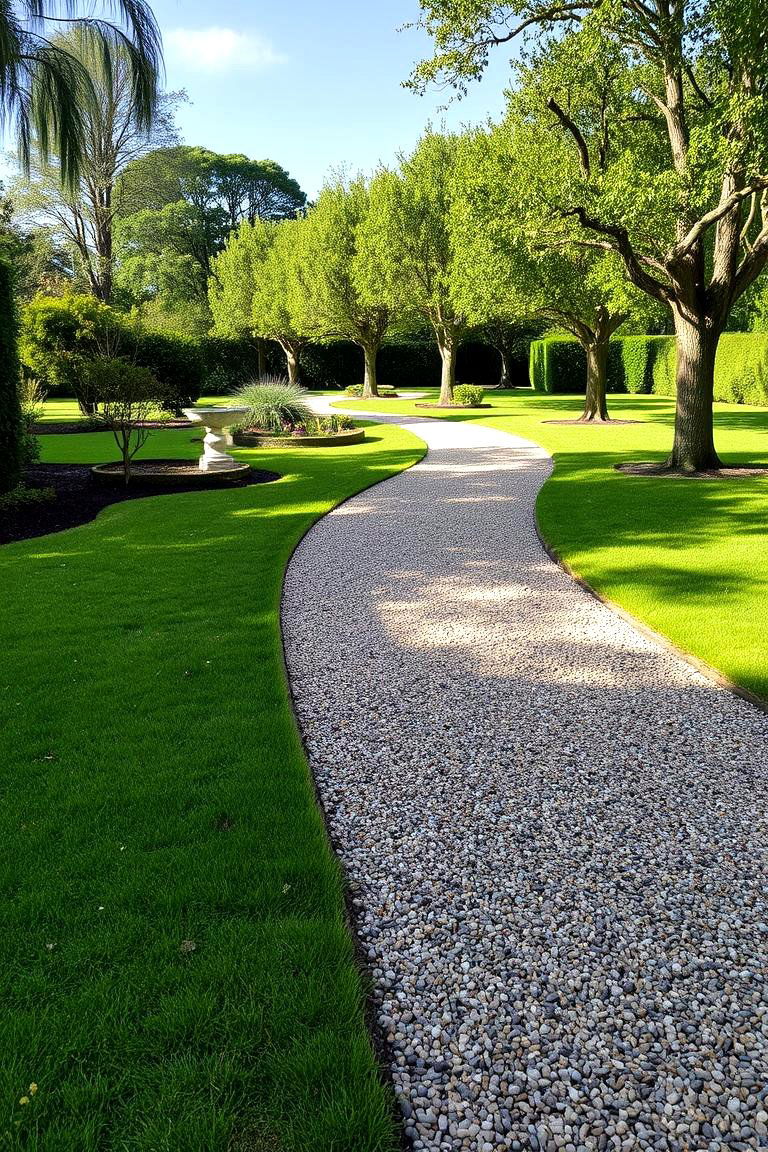
A combination of gravel and turf can create a unique walkway with both texture and greenery. The gravel portion forms the main path, while the turf serves as a soft, inviting border. The curved lines in the layout help lead visitors through the space, and the mixture of materials adds visual interest. This combination works especially well in a garden with varied planting areas, allowing the path to complement the natural beauty of your landscape.
22. Colorful Tile Walkway
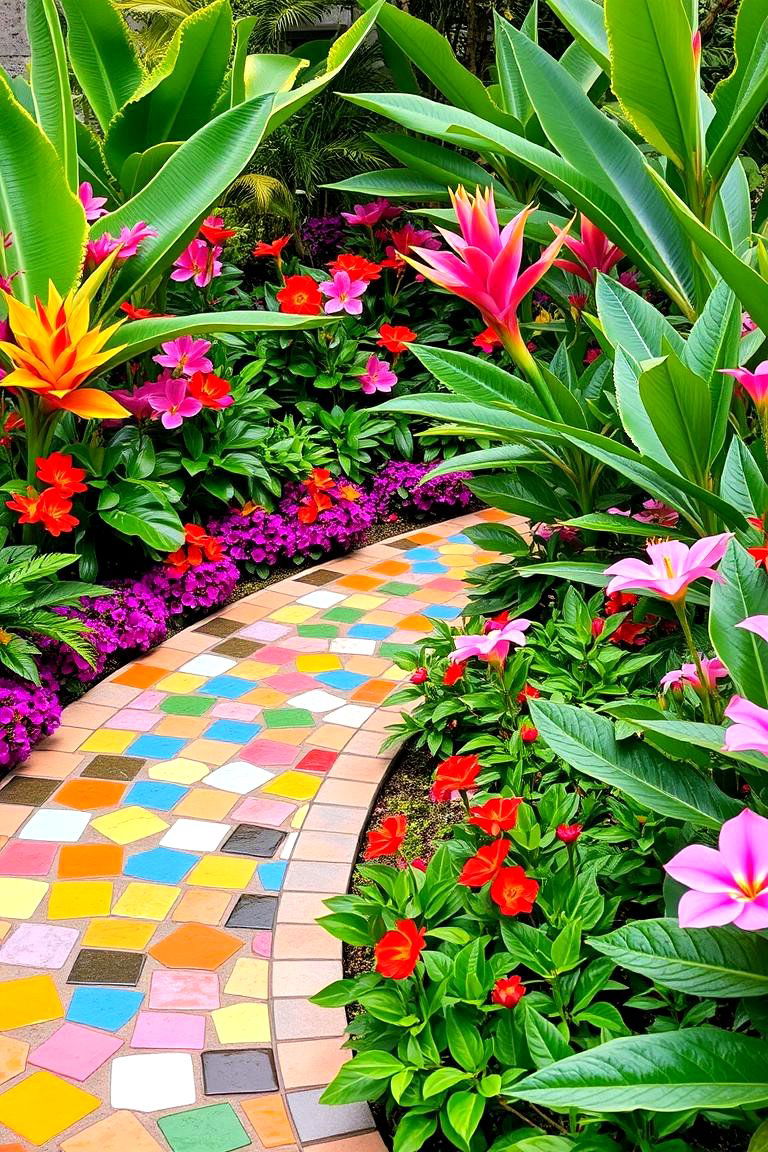
For a bright and playful look, consider using colorful tiles for your curved walkway. Tiles come in an array of vibrant colors and patterns, giving you the chance to express your creativity and add a bit of flair to your outdoor space. The tiles’ curved layout helps soften the look and create a seamless flow, guiding visitors through your garden or yard. This type of path is perfect for a whimsical or Mediterranean-inspired garden, offering a bold statement in your landscaping.
23. Rustic River Rock Path
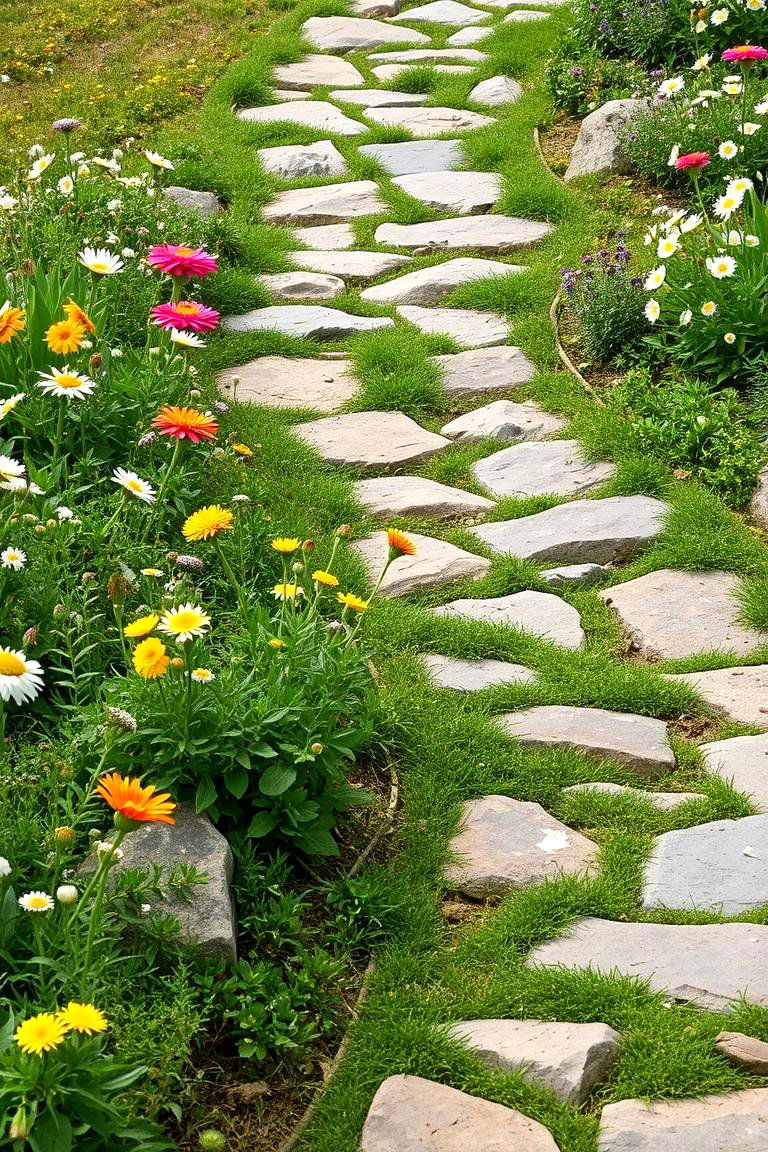
A rustic river rock path blends naturally into the environment with its smooth stones and organic curves. The rocks can vary in size and color, mimicking the flow of water and adding texture to your walkway. This path type is especially great for landscapes with water features or woodland gardens. The river rocks' natural look and feel contribute to the overall rustic charm, offering a path that is as aesthetically pleasing as it is practical.
24. Gravel with Concrete Edging
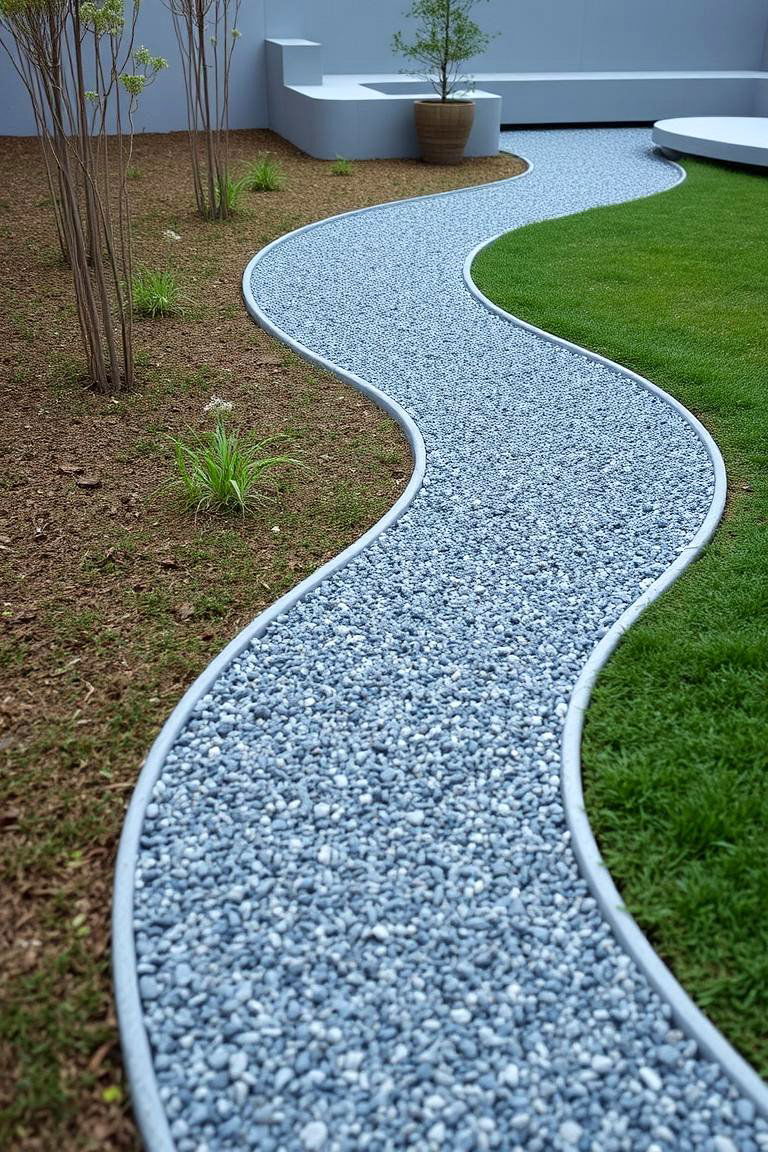
Gravel paths with concrete edging provide a defined and structured walkway that still feels informal and natural. The concrete edging keeps the gravel in place, ensuring the path remains tidy and functional while allowing for creative expression with the gravel itself. Curved designs are easy to incorporate, helping to create a smooth, flowing path that fits into any outdoor space. The contrast between the gravel and concrete offers a modern yet rustic look.
Conclusion:
Curved walkways are an excellent way to enhance the beauty and functionality of your outdoor space. From the natural elegance of stone and brick to the more casual, eco-friendly options like gravel and turf, these paths can suit any design style. By thoughtfully selecting materials and layouts, you can create a walkway that not only guides people through your garden but also adds to its overall ambiance. Embrace these creative walkway ideas to inspire your next landscaping project!


